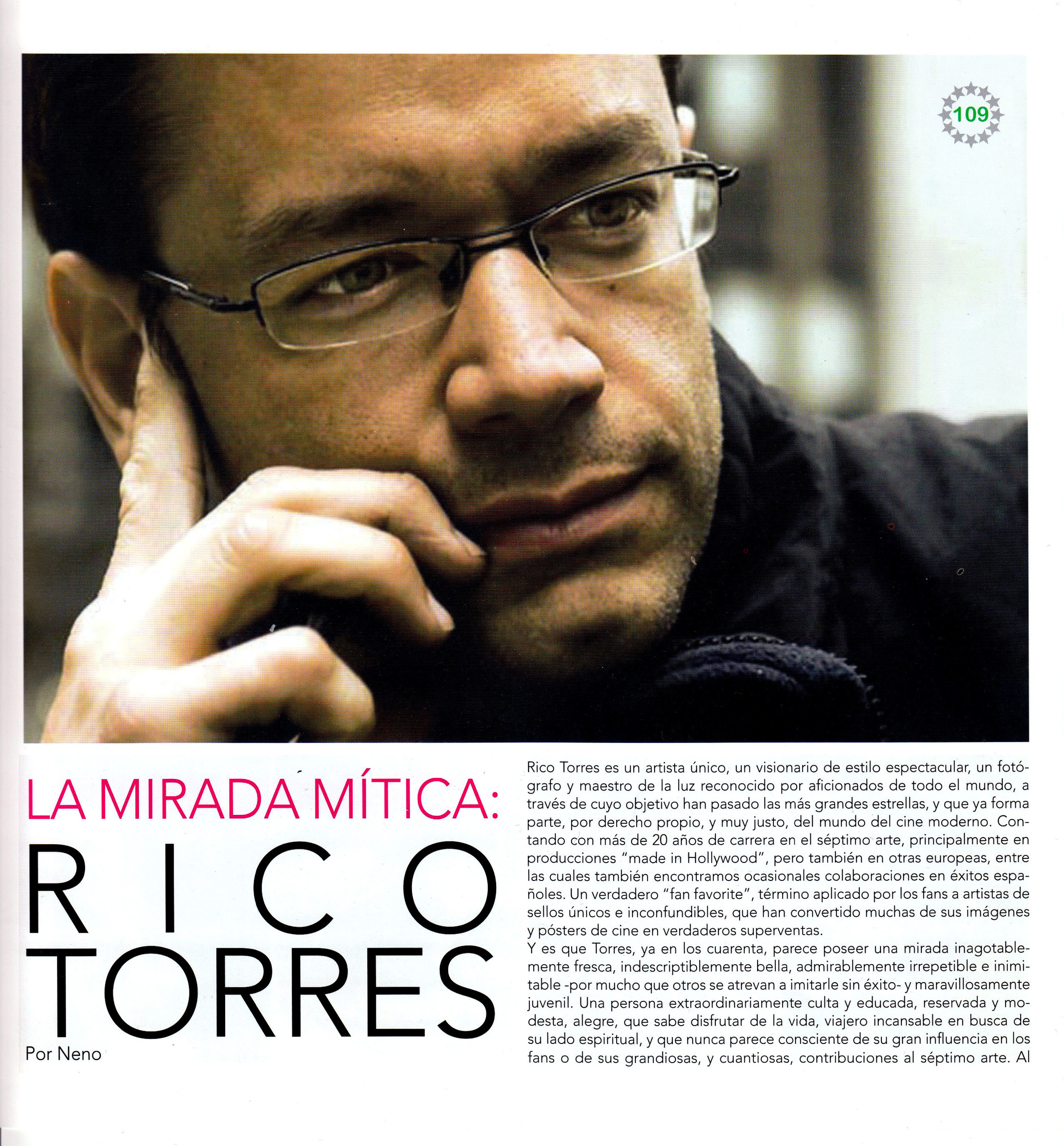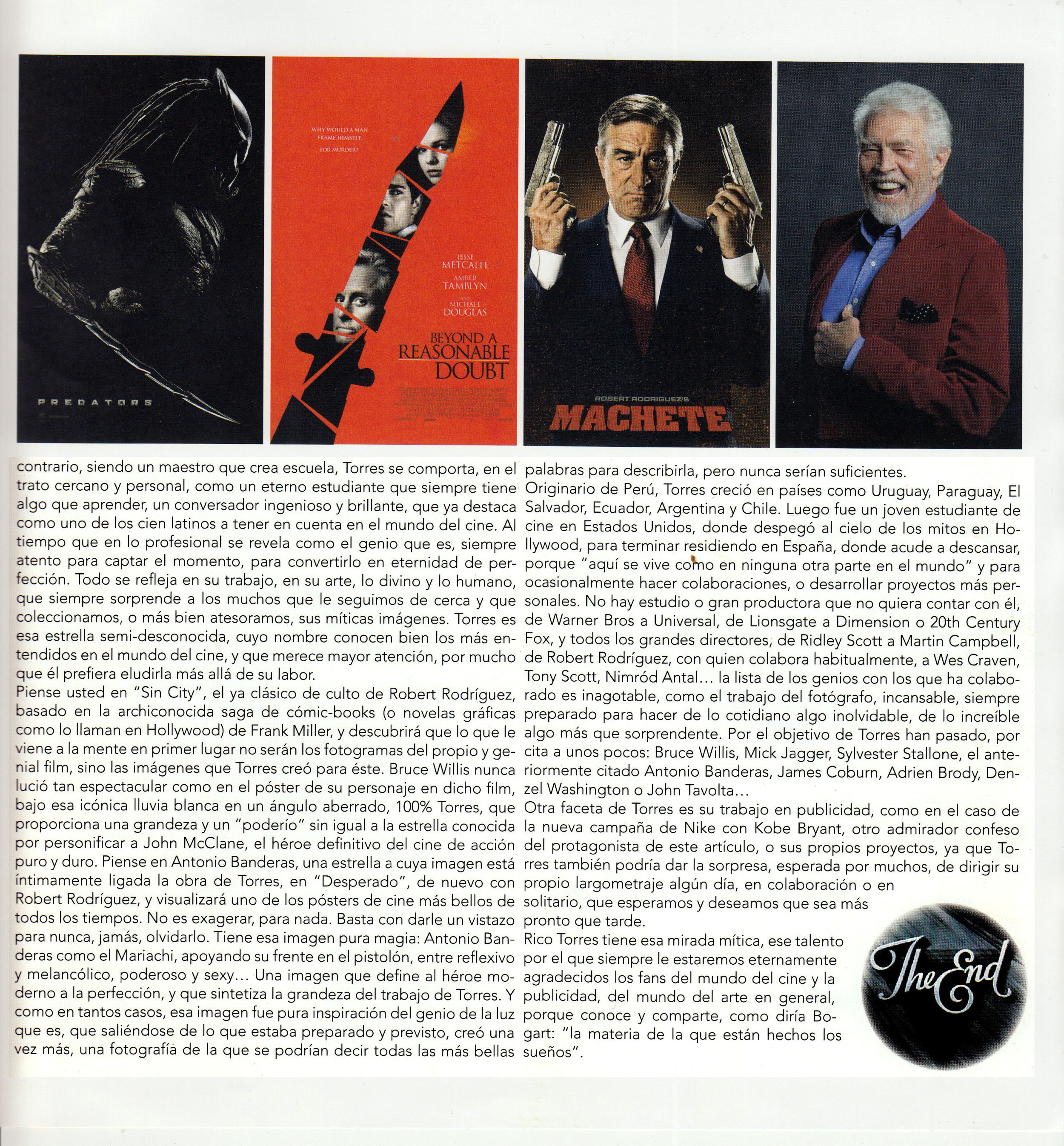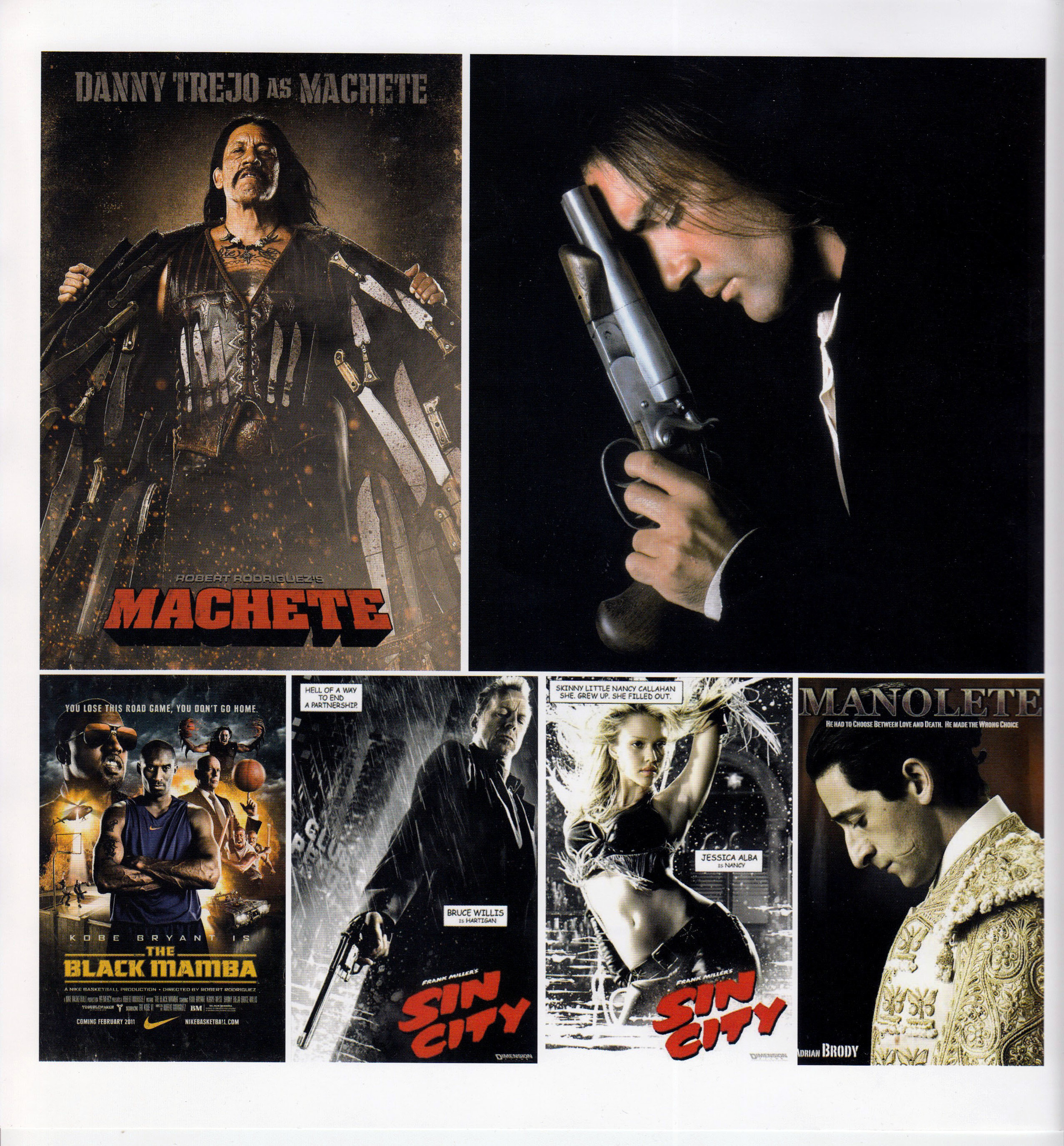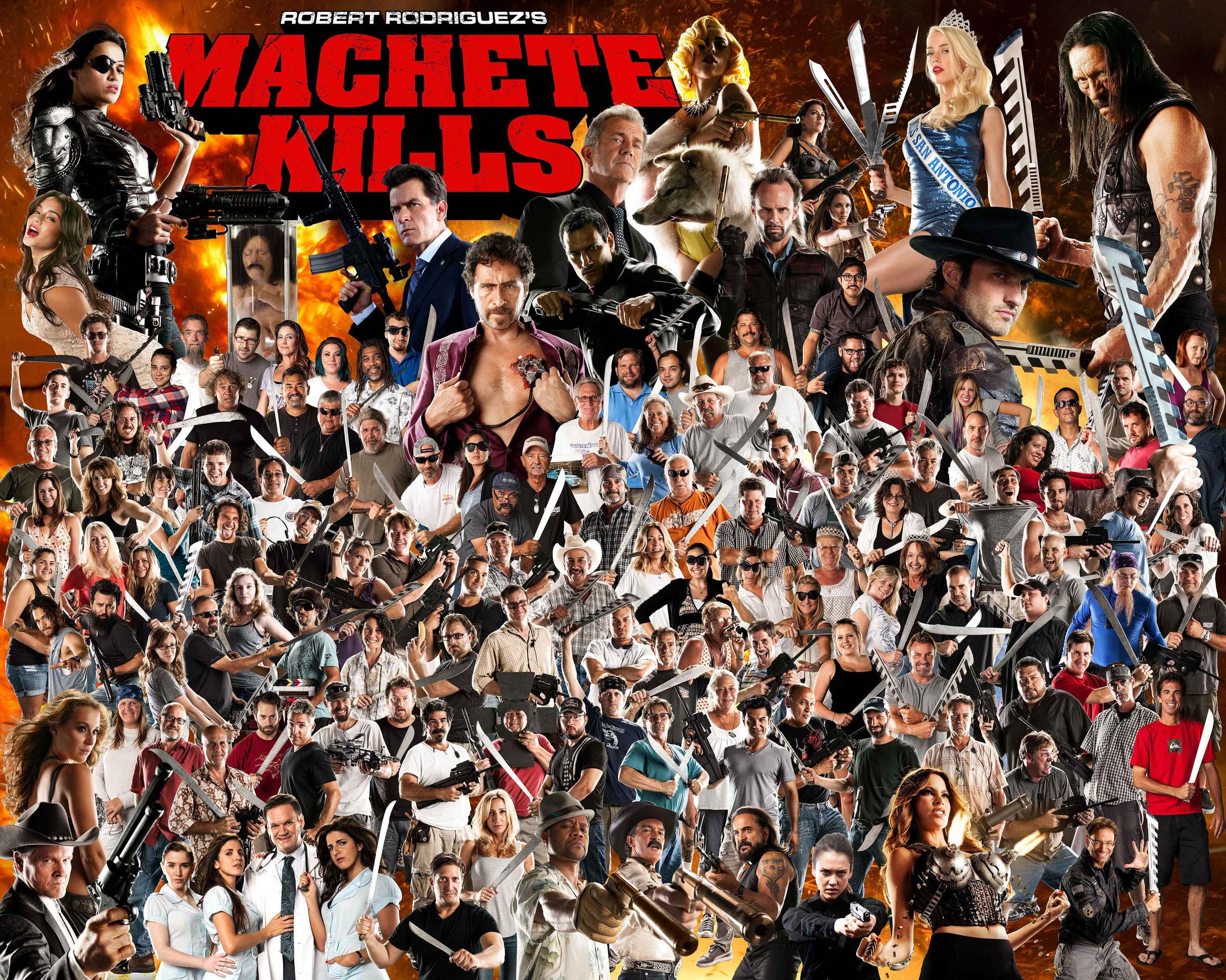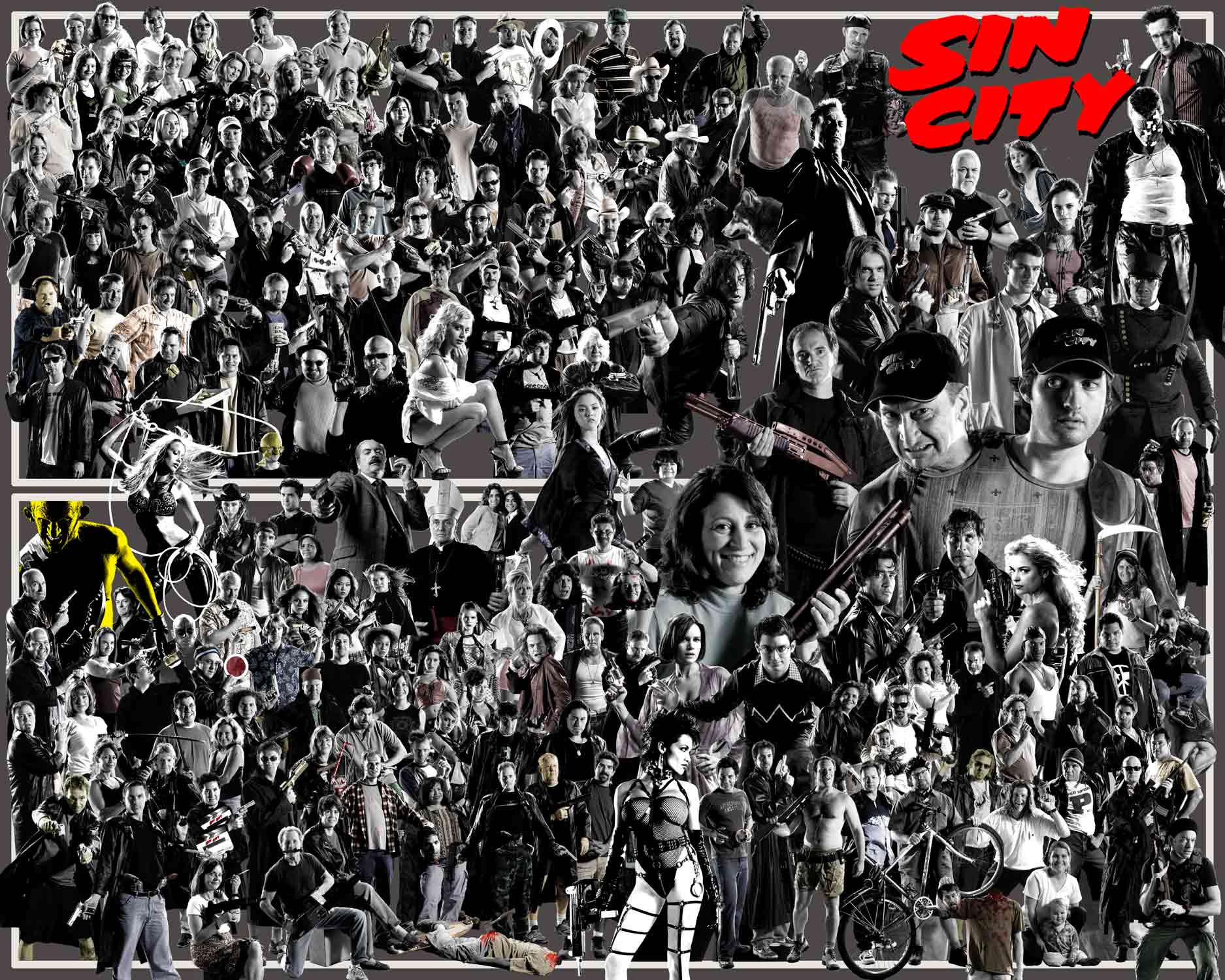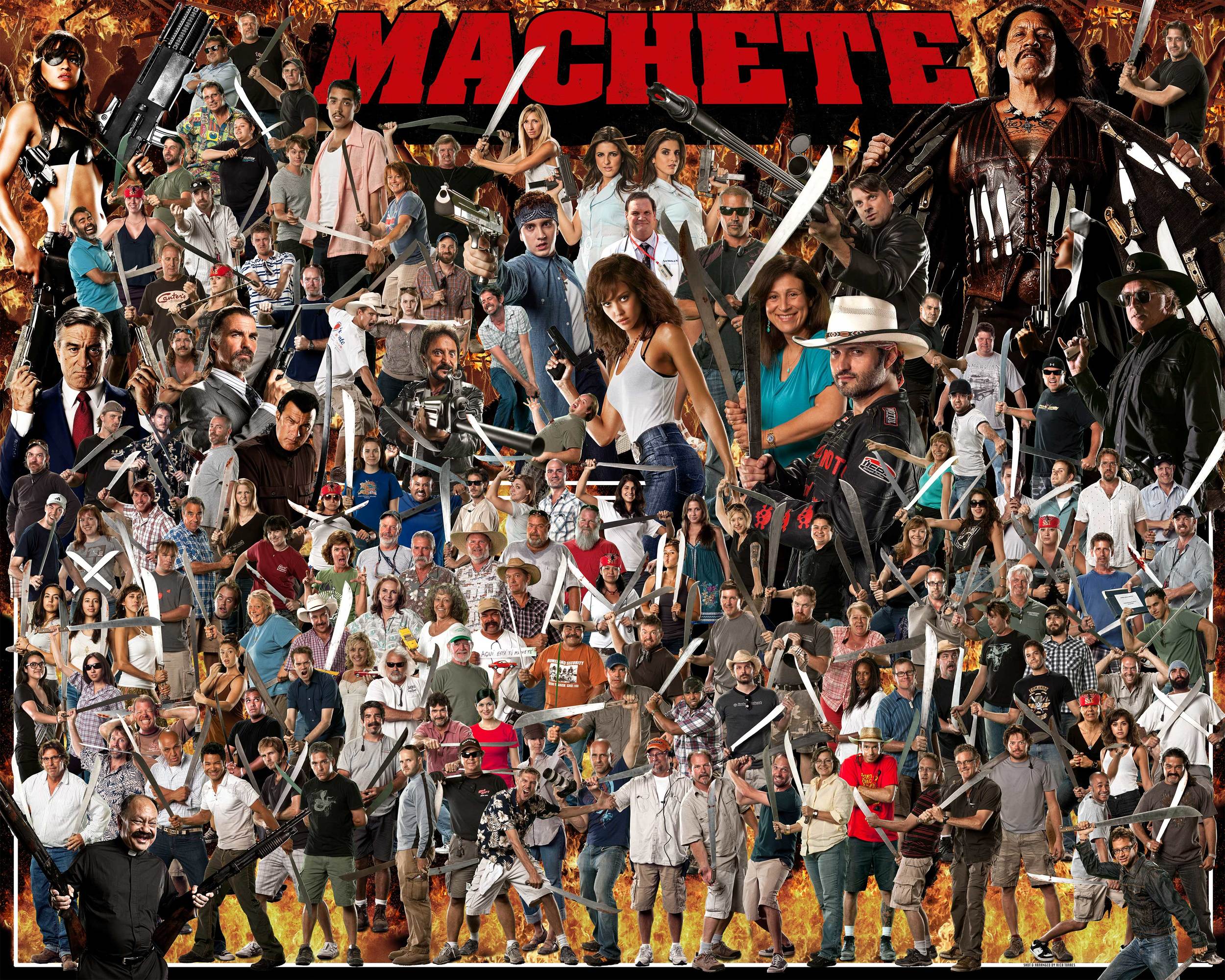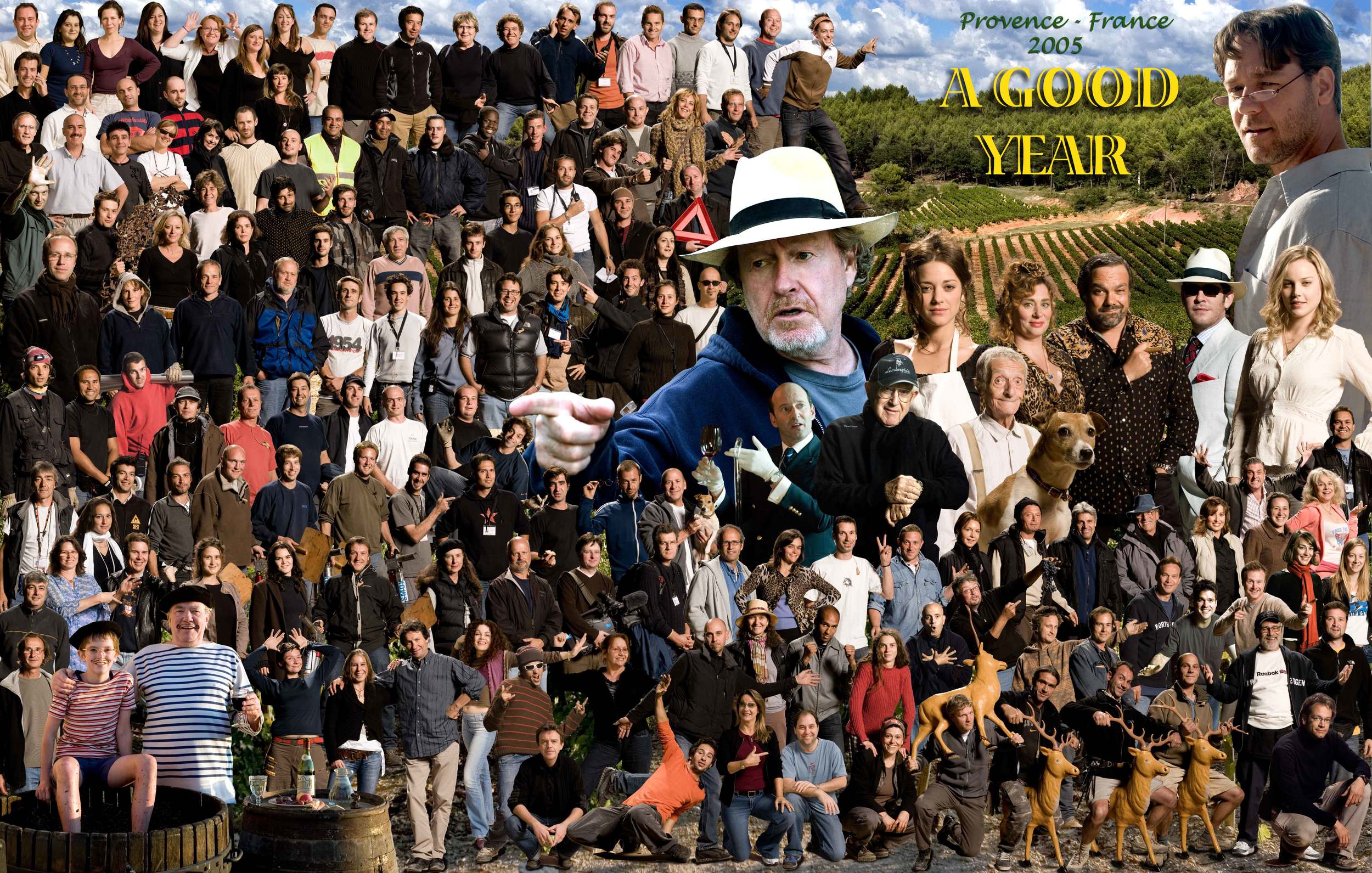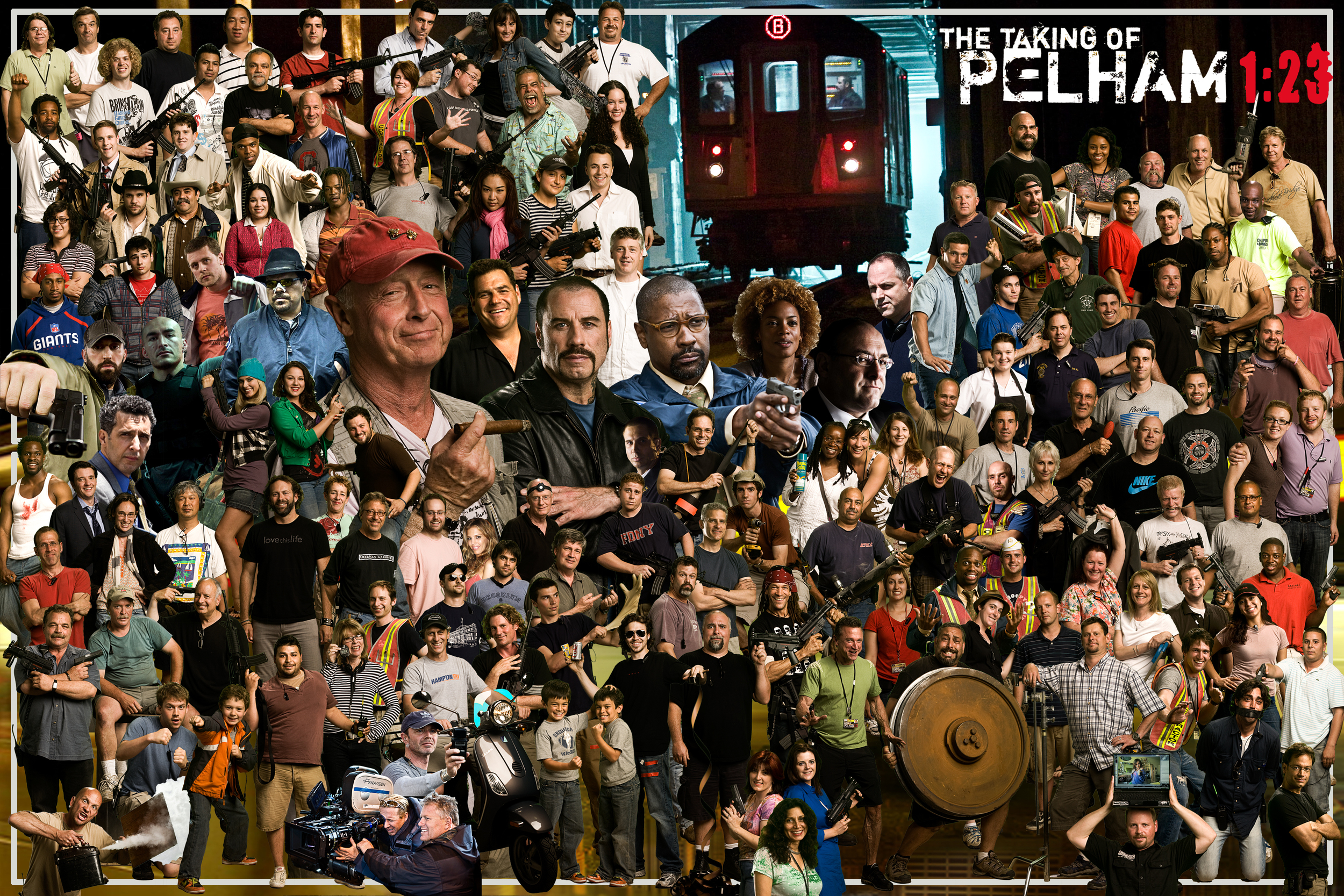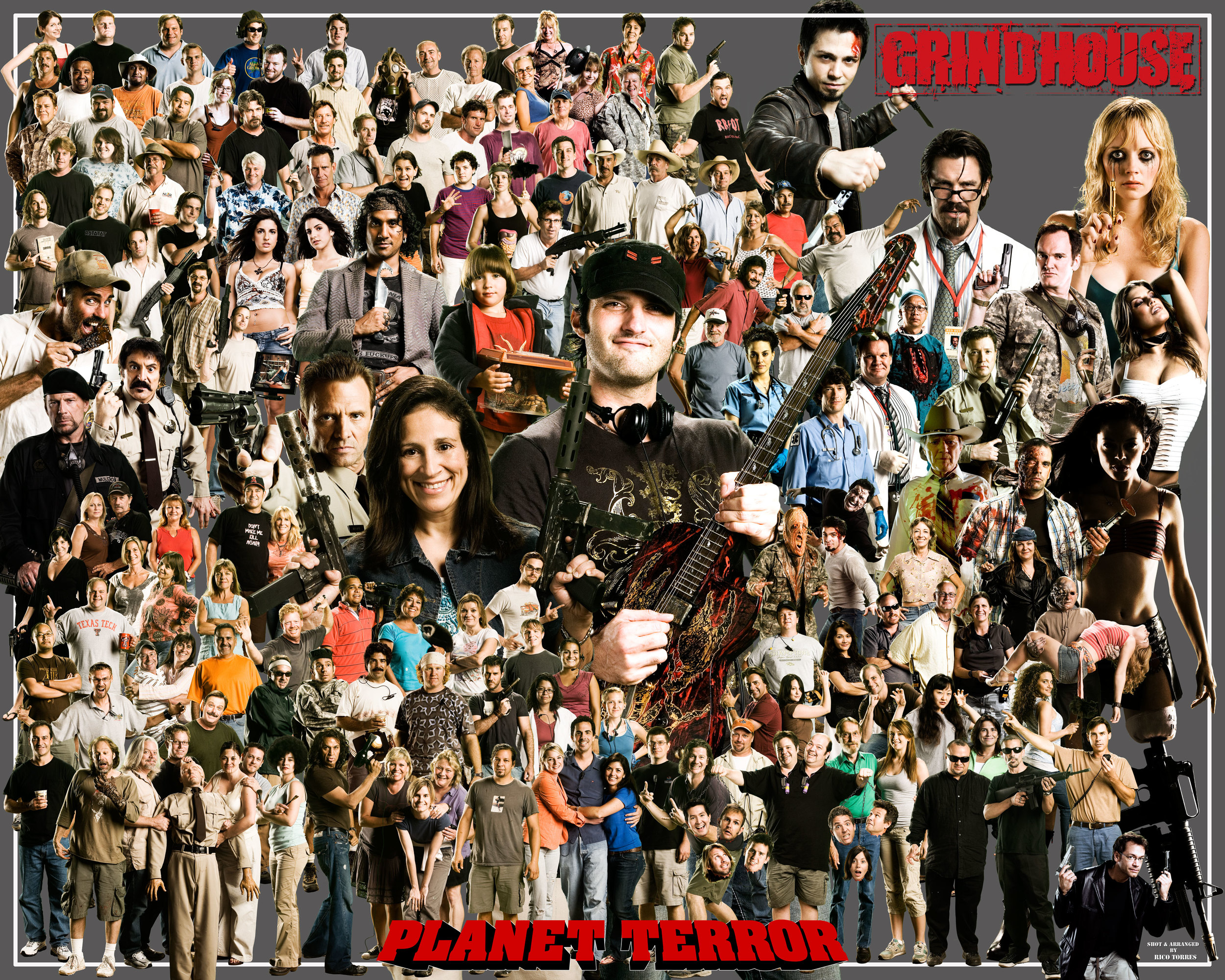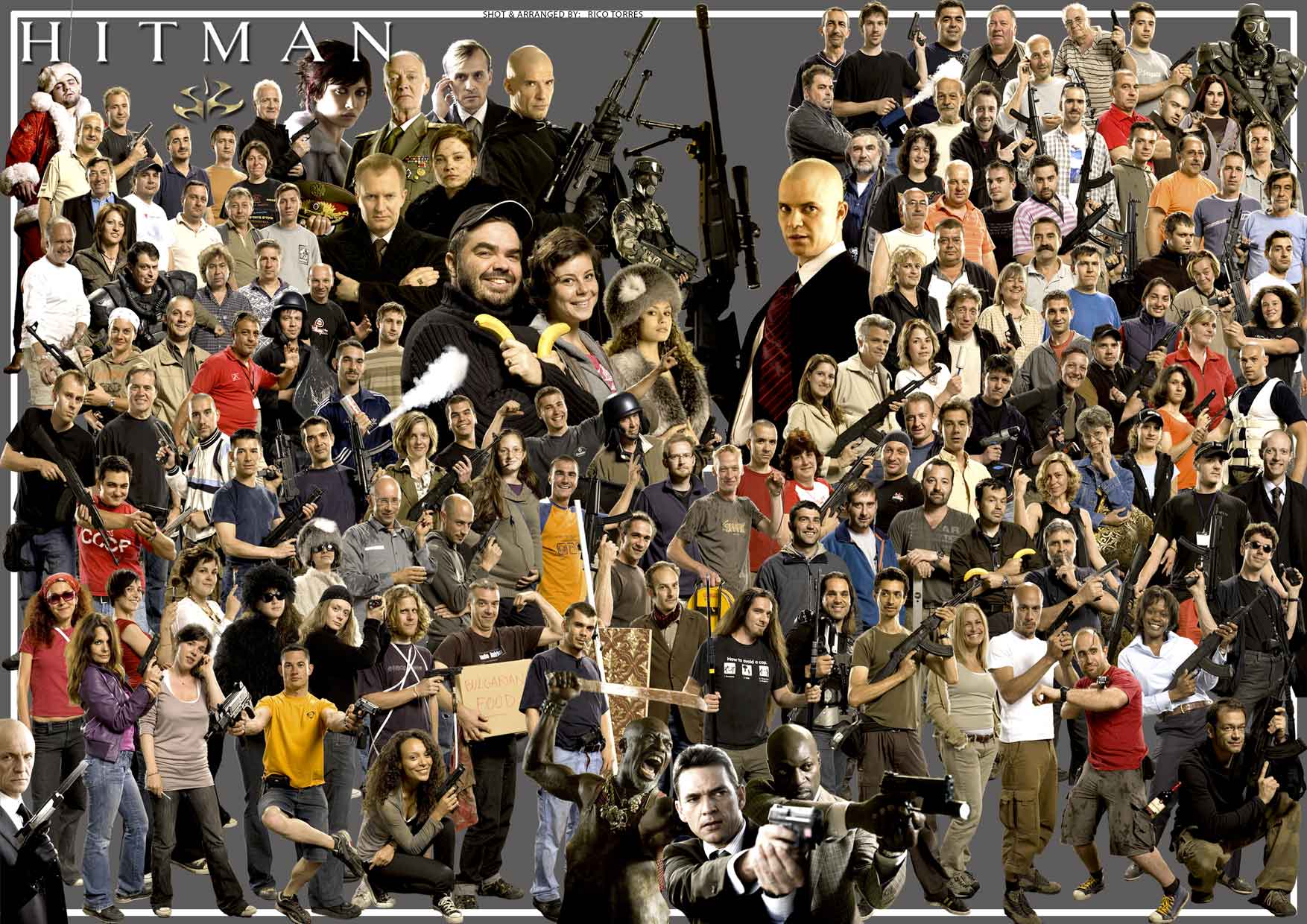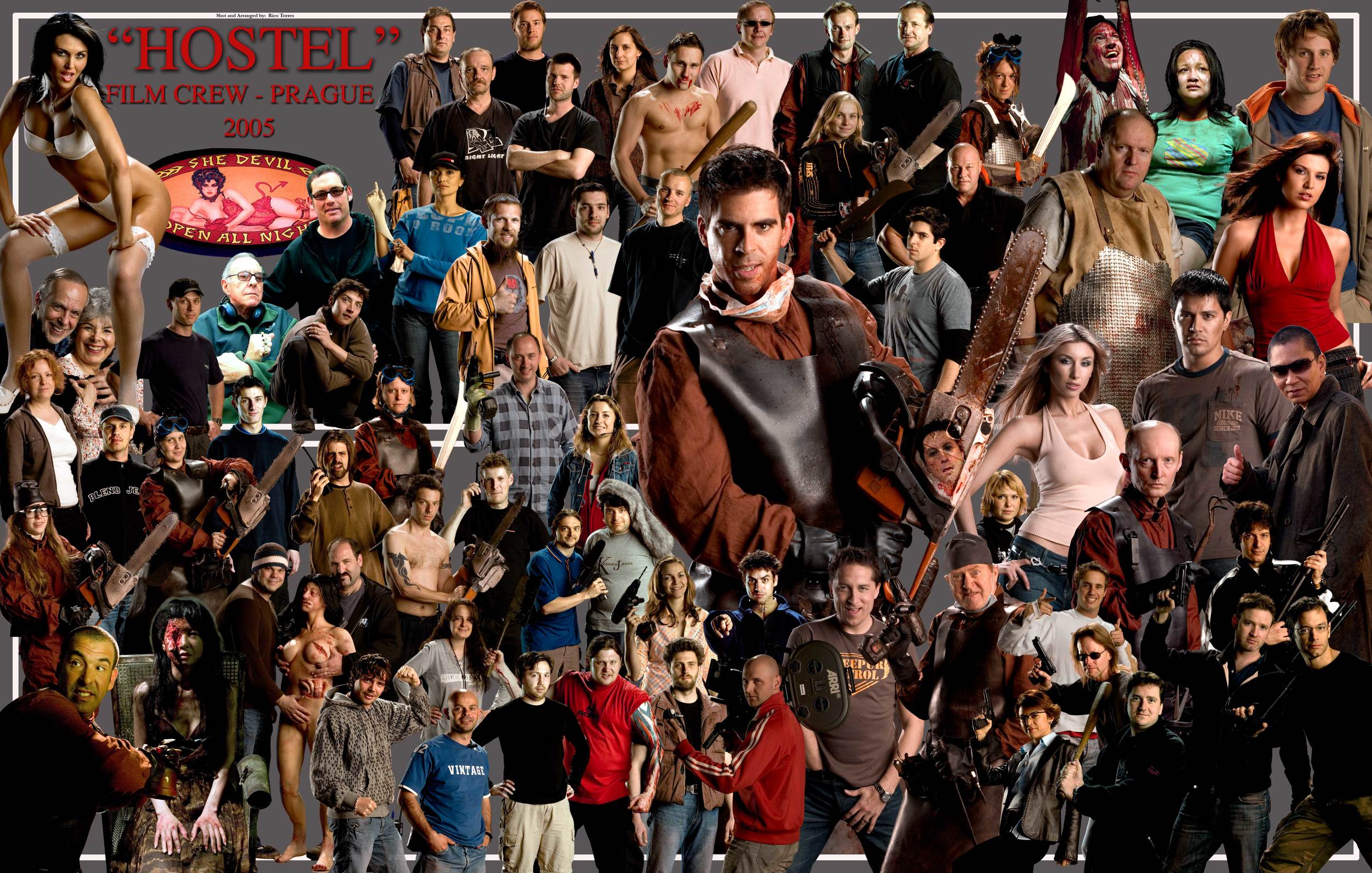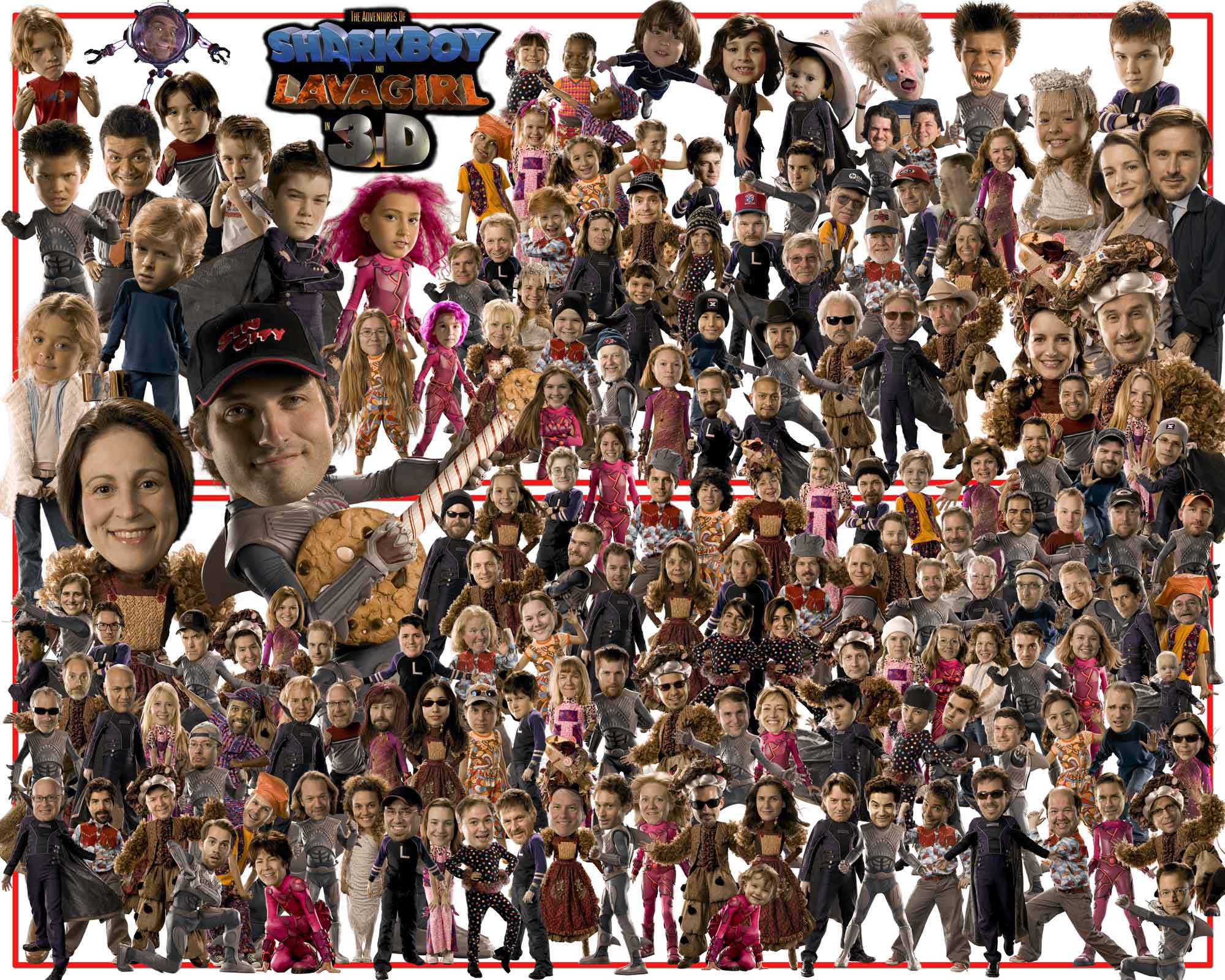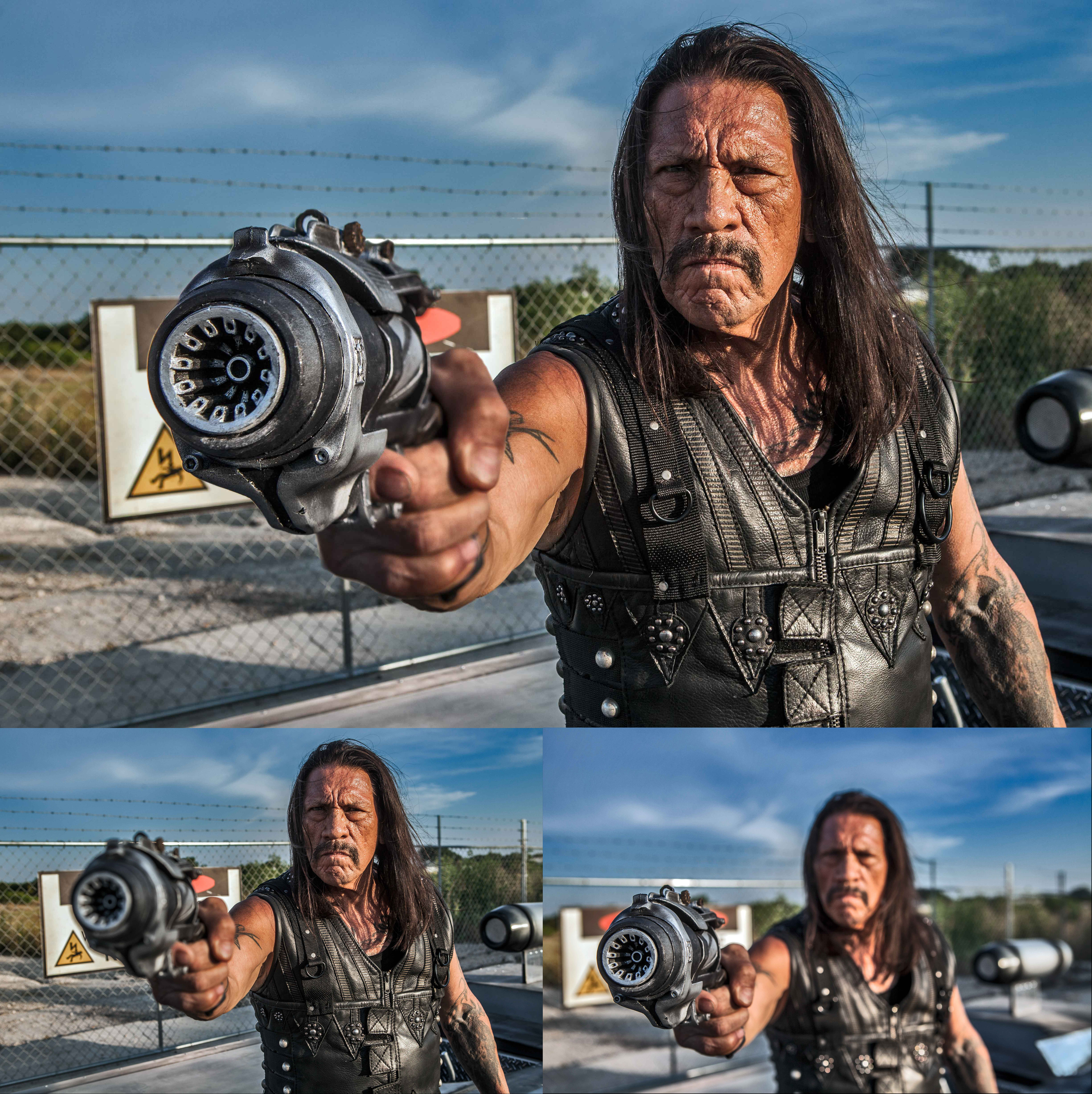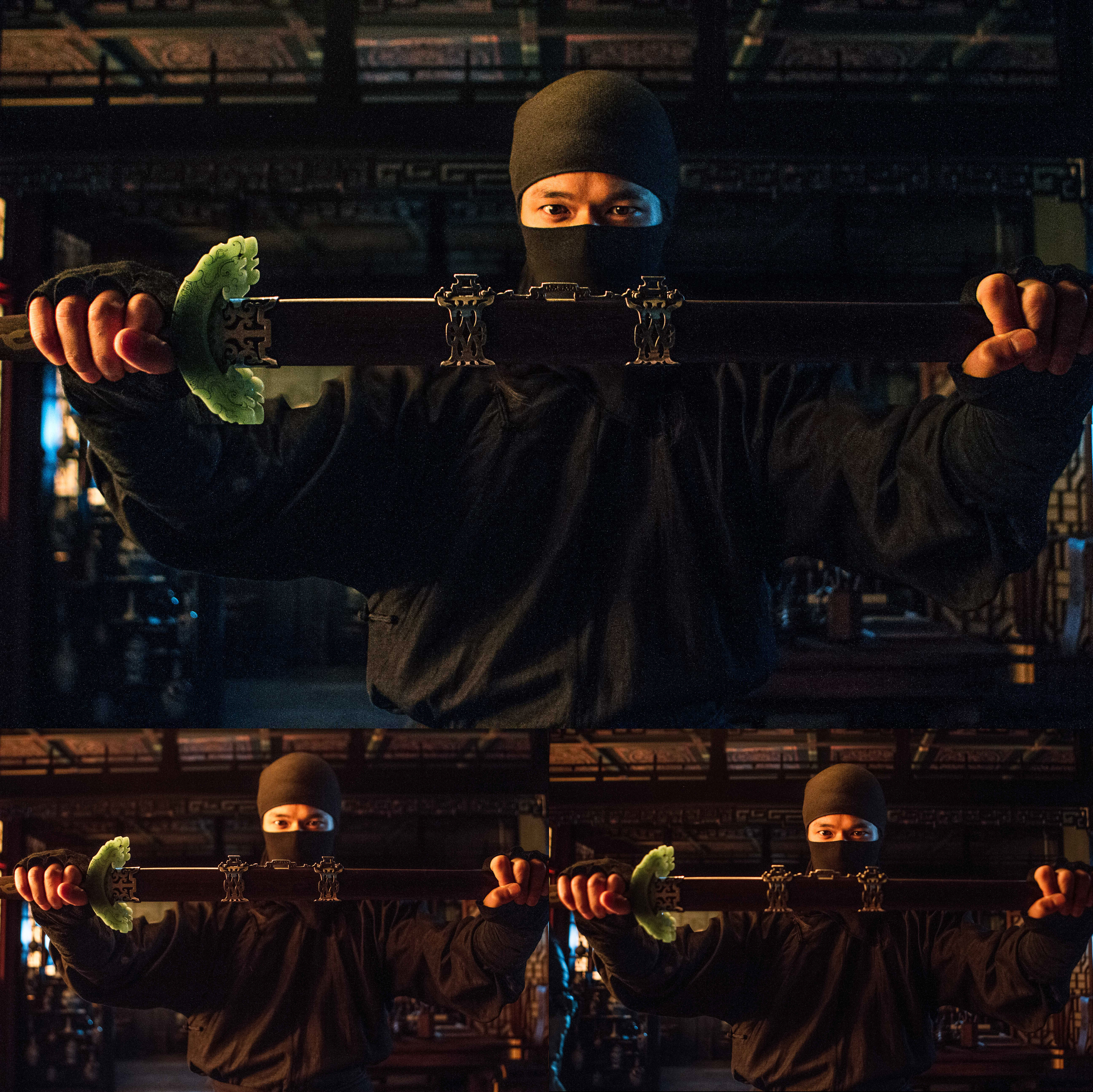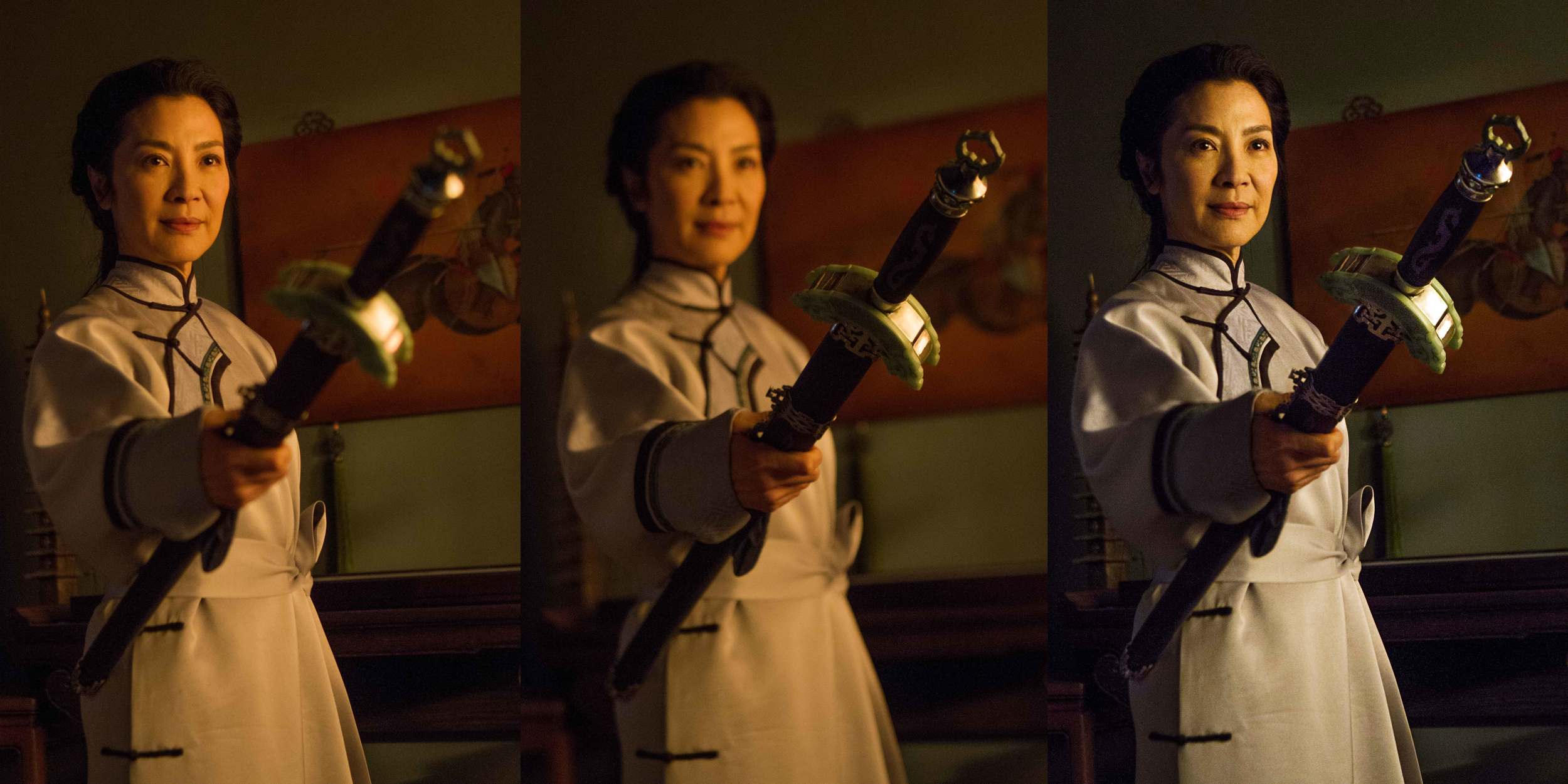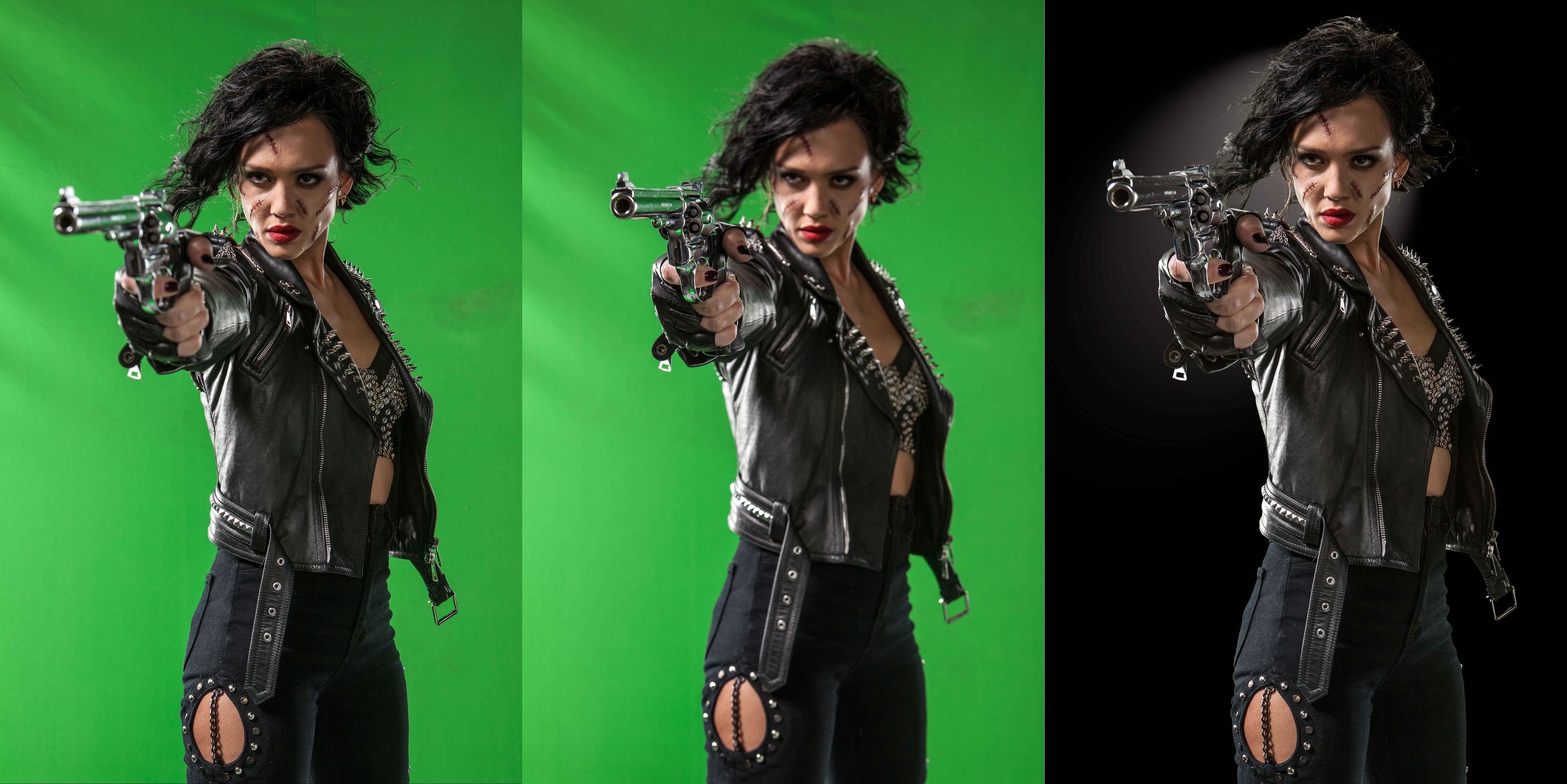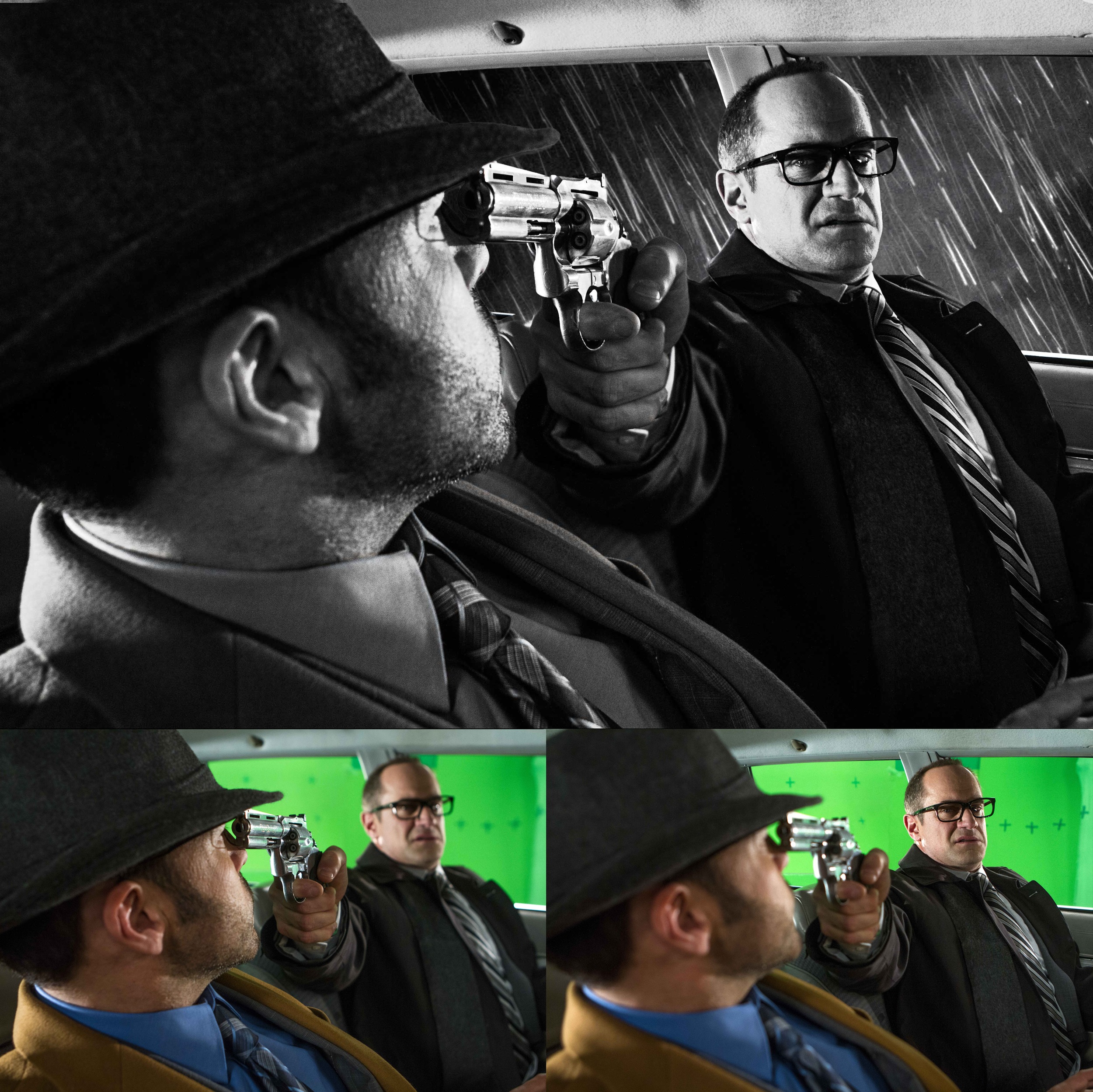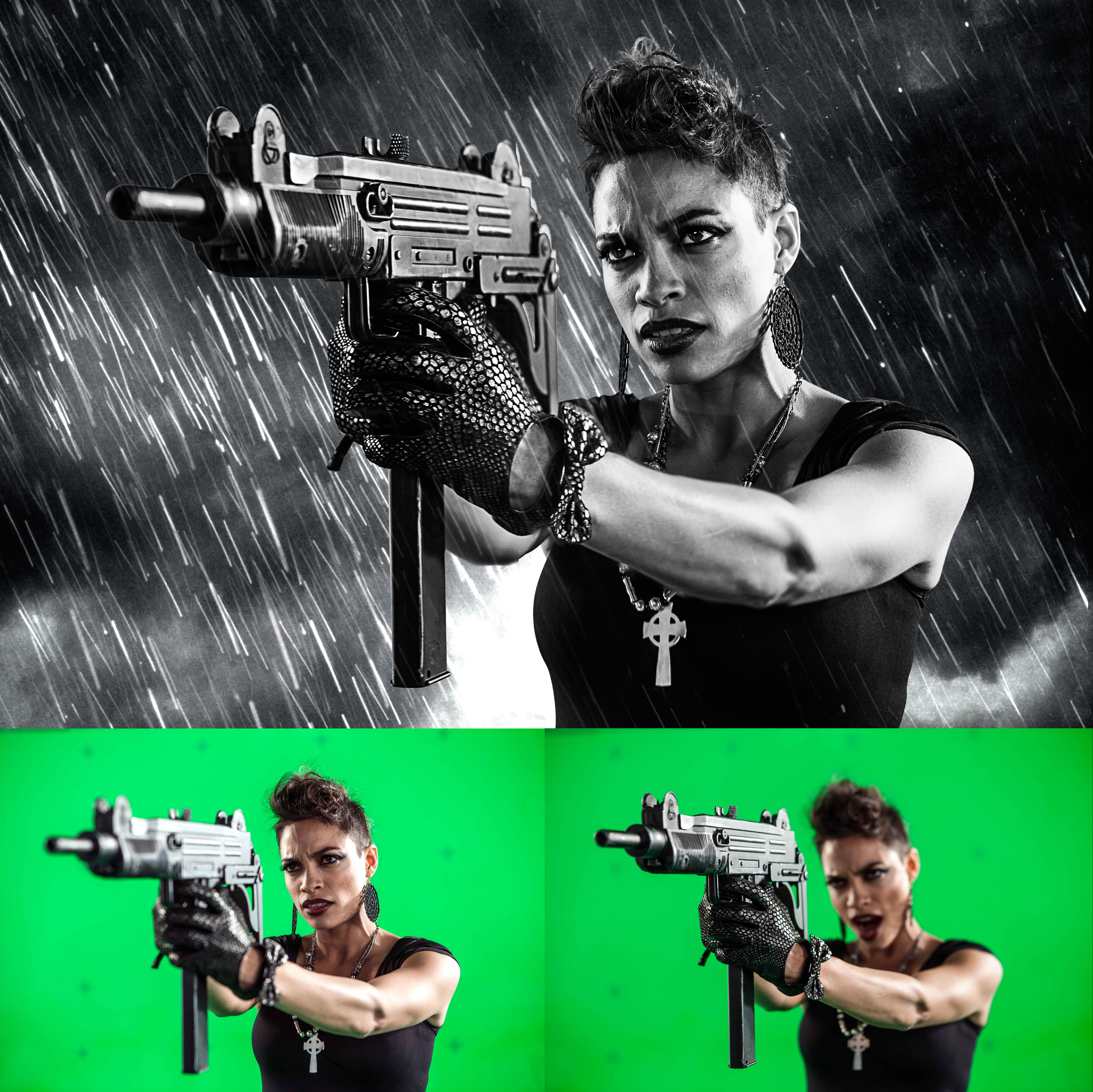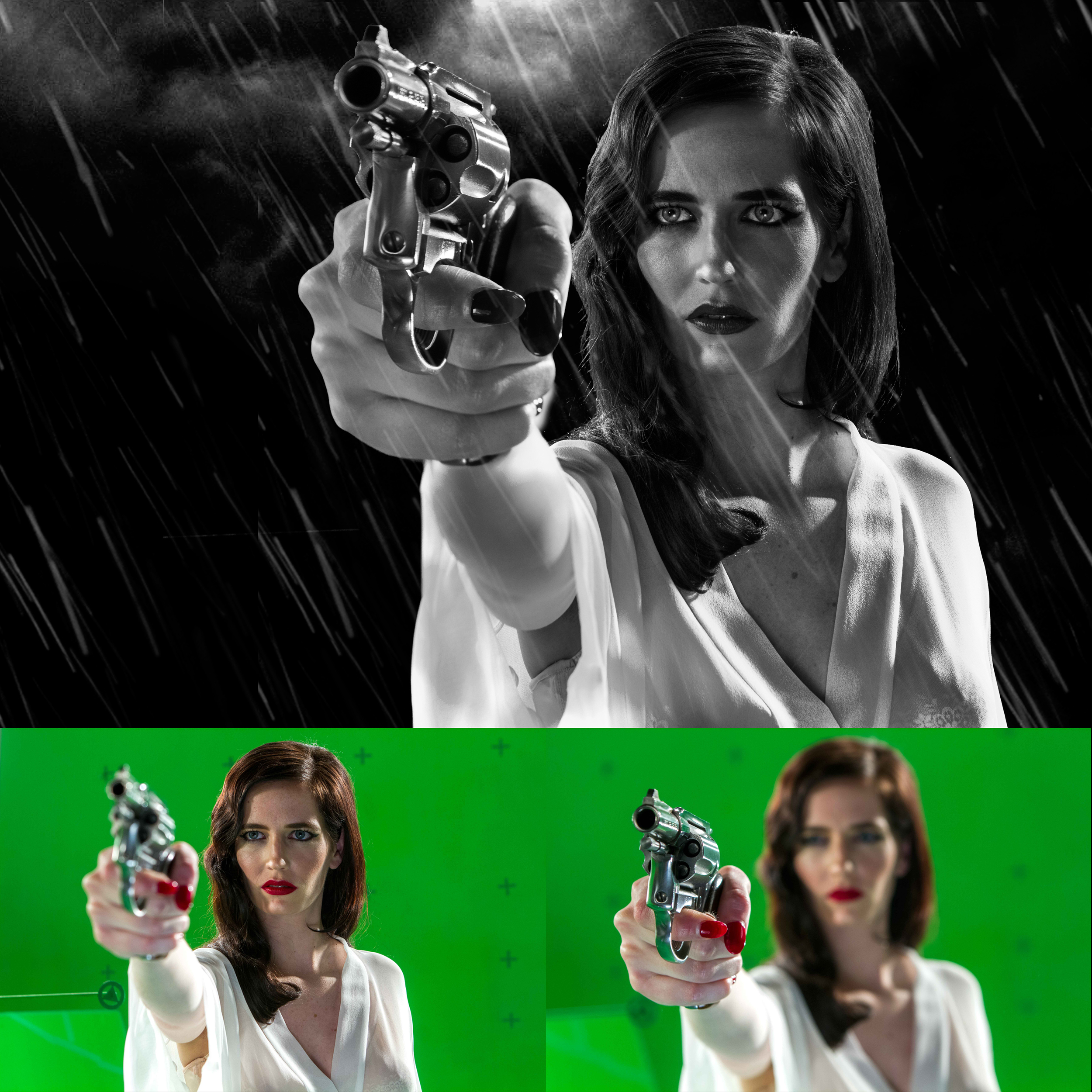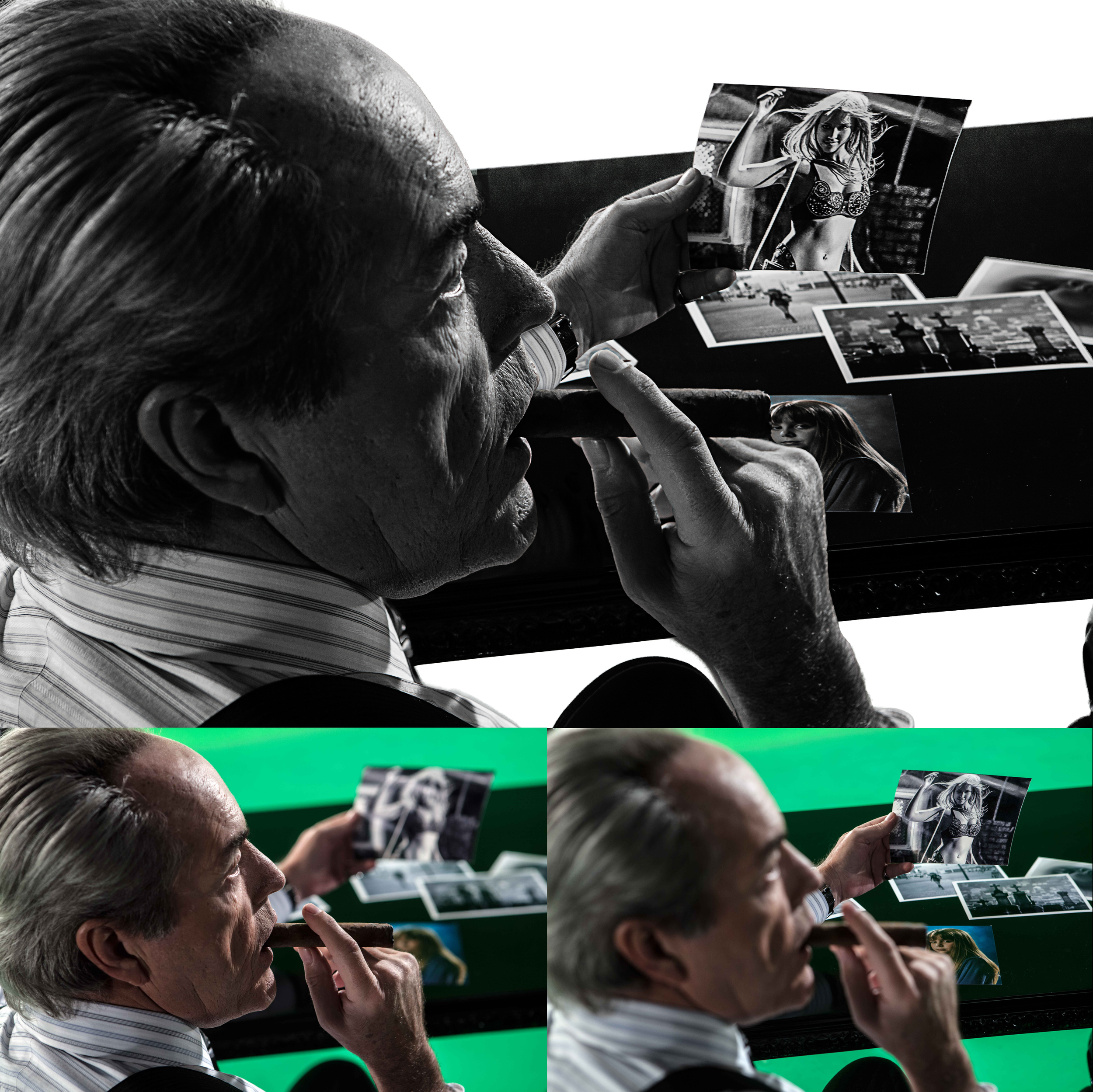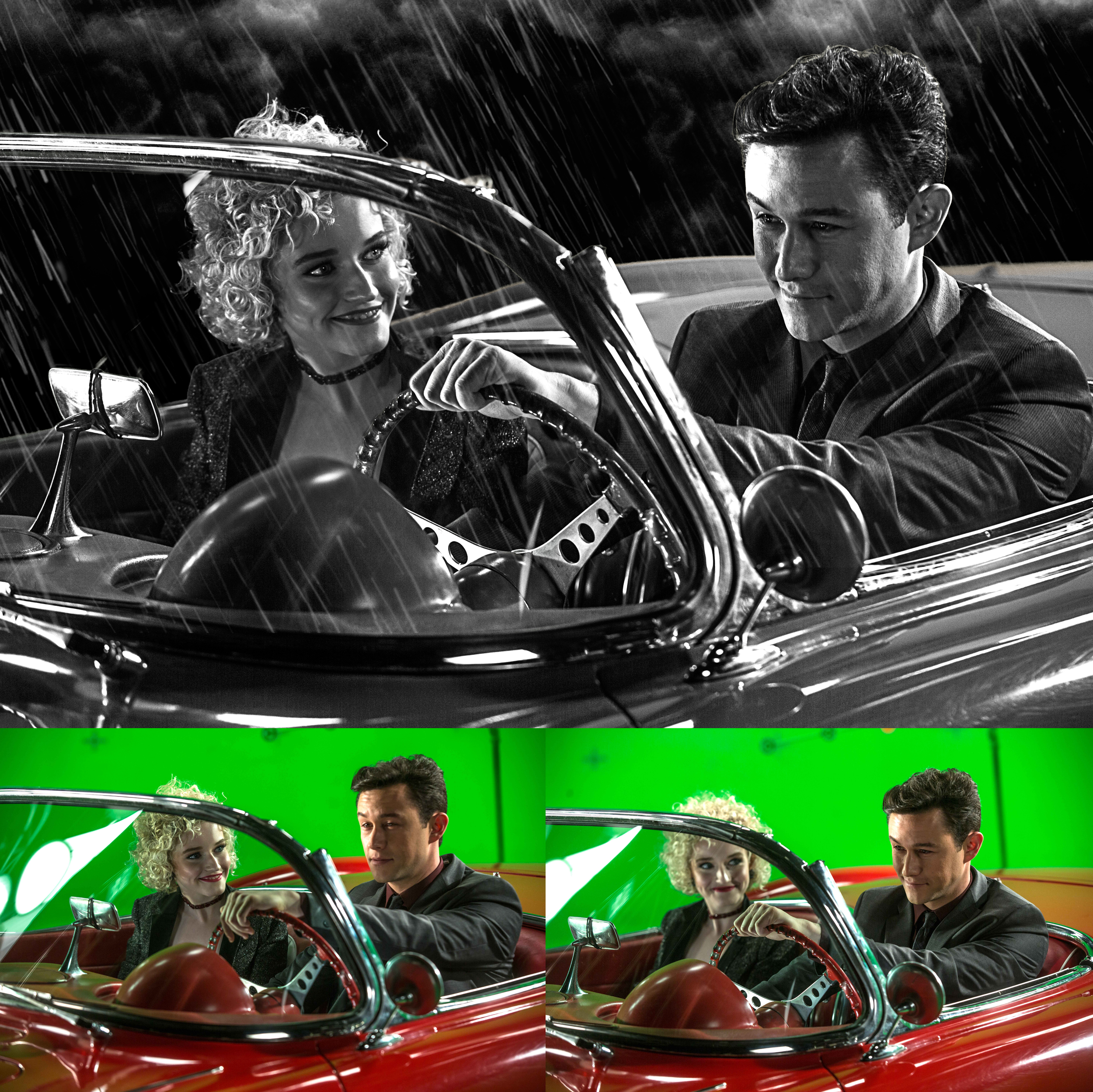Explore the groundbreaking journey of Rico Torres, a trailblazer in film industry photography, as he narrates his pivotal role in transitioning from analog to digital on movie sets. Starting with the iconic 'Spy Kids 2', Torres delves into the challenges and triumphs of embracing digital photography in Hollywood, marking a significant evolution in cinematic storytelling. Discover the behind-the-scenes stories and the pivotal moments that reshaped film photography.
Read MoreWHY I SWITCHED FROM CANON TO SONY
WHY I SWITCHED FROM CANON TO SONY
A Professional Photographer’s Point of View
Rico Torres
In order to explain why I switched from Canon to Sony, I must explain what type of photography I do, in order to put my evaluation into context.
I am a professional photographer that has been using Canon cameras and lenses for the past 30 years. I started with the AE-1 model, when photography was still a hobby for me, and moved up to the flagship EOS-1V when I turned pro.
The type of photography I do is very specific and requires special skills and equipment. I am a Unit Still Photographer, which basically means I shoot on movie sets. Most people think that movie stills they see in magazines and newspapers come out directly from the movie print, but in fact, there is a still photographer on set working every day, side by side with the camera crew, capturing those amazing stills. The purpose of these stills is to entice the paying audience want to go see the movie.
Still photographers have a major limitation when shooting on a working movie set- sound! Sound is recorded through a boom mike or microphones that the actors wear. These microphones pick up any sound on the set, which makes it impossible for still photographers to shoot while they are filming. The only way around this, when I started working as a still photographer, was to use a sound blimp, which is a padded housing that covers the camera in order to reduce the sound of the shutter click. At that time, the only option was the blimp housing made by Mark Jacobson, in Los Angeles (http://www.soundblimp.com). These blimps are bulky and add considerable weight to the rig hanging from your neck.
Sound Blimps have a shutter button that connects via an internal cable to auto-focus cameras, so I had to upgrade my AE1 to the EOS 1V in order to be able to shoot on set. Once the back cover of the blimp is closed, you do not have access to any of the buttons on the camera, except for the shutter and auto-focus.
Years later I was one of the first still photographers to switch to digital cameras, when the Canon D30 came out. Digital SLR’s are as noisy as analog cameras, because they have a moving mirror and a shutter, so the only advantage of shooting digital was that I could see what I was shooting in the LCD monitor on the back of the camera. But at that time Jacobson did not make blimps with windows in the back cover, so I had a tool shop cut out a window on my blimp.
Sound blimps are not perfect. They reduce the sound of the camera- not eliminate it. For most shooting conditions on a movie set, the noise reduction is enough to permit me to shoot while film cameras are rolling, but on intimate scenes in a studio, when the actors are speaking softly, the shutter noise of my camera can be heard through the blimp. This is a problem, and I have missed many great shots because of this. Canon added a feature to their new cameras, which is a life changer for us still photographers- silent mode. This feature reduces the sound of the shutter considerably, and in combination with the sound blimp, now allows me to shoot freely on very quiet movie sets.
I have been loyal to Canon, always updating my cameras to the latest model, and taking advantage of all the new features and technology, but fervently wishing they would someday come out with a silent camera.
My wish came through, but not via Canon. I had been hearing other still photographers rave about the new mirrorless cameras in the market, specially Canon and Fuji. These cameras are 100% silent and have an electronic viewfinder, instead of the traditional optical, see-through viewfinder. I thought this was a cool novelty, but it was not enough to make me switch camera systems. In fact I was not even interested in testing out these new cameras. So I continued using Canon gear for several more years.
But last year I had the opportunity of using Sony cameras on a major movie set, and it was a life changing moment for me! I was working on Alita: Battle Angel, a $200 million James Cameron film directed by Robert Rodriguez. In the middle of production I got contacted by a Sony Electronics Sr. Business Development Manager telling me she wanted to send me camera gear to test and try on set. She sent me the a7SII and the a7RII cameras, plus a case full of their top lenses for me to try out for two weeks. I was so impressed with these cameras that I asked the Sony manager to allow me to keep it for a full month. I was blown away by the results I was getting with these cameras and lenses.
I used the a7SII on the movie set, while using the a7RII for studio work. When working with Robert Rodriguez I have a permanent photo studio set up in a sound stage, and I regularly use it to shoot all the characters of the movie. I was impressed by the sharpness of the 42 megapixel a7RII. The only drawback was that it took a second for the image to appear on the LCD monitor, but this was probably due to not using a high performance memory card.
Most of my daily work is on a movie set, and that is where I was blown away with the a7SII. This camera is 100% silent, so it allows me to shoot without a sound blimp. This is HUGE, because now I am able to not only shoot in very quiet moments without the bulkiness and weight of the blimp, but it allows me to obtain shots I could never get before. For example, there was a moment that the 3D camera rig, mounted on a crane, was extended and hovering just inches off the ground, aimed tilted up at an actor who was sitting on the floor. I squatted next to the camera rig and extended my arms positioning the a7SII in the space between the camera rig and the ground. I tilted the LCD monitor towards me so I could see what I was shooting, and I was able to capture a shot I could only have dreamed of using a sound blimp. Due to the weight and bulk of the sound blimp, shooting in live view mode is not practical.
The second life changing feature of this camera is the amazing sensitivity it has to light, and it’s wide dynamic range. I was regularly shooting at 6400 ISO and even higher, and was obtaining crisp images with relatively no noise. I am weary of pushing the ISO too high on my Canon cameras.
What follows is my complete evaluation on the use of the a7SII on a movie set. I not only mention the great features that have turned me into a Sony fan, but also the things I don’t like about the camera and recommendations for future models.
PROS
- I am amazed by the sharpness and detail of the image shot under very low light level. It blows away the Canon cameras I have been using. I now regularly shoot at very high ISOs, something I would rarely due, because of the added noise degradation. The extended dynamic range is incredible, giving me a lot of detail in the shadow areas.
- Auto focus mechanism is very fast and accurate
- lightweight
- silent. No need for a sound blimp
- the tilt monitor is a big plus, allowing me to shoot in ways I could never do before. With the sound blimp I am limited to shooting with the camera pressed against my face- with the Sony cameras I can now extend the camera as far as my arm allows, and use the tilt monitor to frame in live view mode.
- the viewfinder is sharp and displays the set color balance and exposure accurately.
- The advantage of using an electronic viewfinder over an optical viewfinder is that you what you see is exactly how the image will look once it is captured. You are able to visualized quite accurately what the final shot will look like, as you set the exposure and color balance. You see what the camera sees, not what the eye sees.
- the focus lock button on Sony lenses is an excellent feature. I no longer need to constantly focus and reframe between shots. I can lock the focus and shoot away.
- 5 axis image stabilization is built into the body. This is very convenient, as you are not relying on image stabilization lenses.
CONS
- Servo auto-focus works terribly. Camera is not good for shooting action that moves to or away from the camera, because the auto-focus cannot track the action. I hope this is resolved in the next version of this camera. I know Fuji XT-1 had this same problem, but they resolved it in the XT-2.
- The sensor behind the camera which switches the monitor to go off and the viewfinder to switch on, is too sensitive. When trying to shoot with the camera away from my face, looking at the monitor, if you pass your finger 2.5 inches away from the sensor, it turns off the monitor and reverts to the viewfinder. This is very annoying, specially when trying to capture the right moment on a movie set. It would be nice to be able to have the option to have the monitor never go off, even if this means less battery life. In other words, give us the option to set the camera so that when we look through the viewfinder, have the camera detect this and turn it on, but leave the monitor on, instead of turning it off.
- the electronic viewfinder takes too long to start up when first pressing on the shutter button. It takes about a second to come on, which sounds trivial, but when you are on a movie set and work fast, it is very annoying. Turning Auto View off speeds it up, making the monitor turn on immediately, but the viewfinder still lags behind.
- the front dial should be able to be locked, because it is easy to inadvertently change the aperture and shutter settings. It is prone to be moved accidentally, because it sits at the top of the hand grip, next to where the right index finder sits. I have a suggestion- there is a wheel on the back of the camera used for scrolling through the photo files when in Play mode. But when in shooting mode, spinning that wheel does nothing. Why not move the aperture control setting to this wheel and get rid of the front dial completely. Beef up the spinning wheel- make it thicker, so it feels more solid. This would then resemble the Canon quick dial, which is one of the best features I have seen in any camera make.
- What I miss the most from my Canon cameras when using the A7SII is the joystick at the back, which allows me to move the image in the monitor, when zoomed in. I also miss the quick-dial, which allows me to move to a prior image, even if I am zoomed in to the previous one, maintaining the zoom amount in the new image I scroll to. Sony’s system is awkward and counter intuitive. Granted that it is partly due to the fact that I am used to doing it another way on a different camera, but I feel that the process could be streamlined. For example, when wanting to view the last image on the monitor, you have to press the play button at the bottom of the camera, but to zoom the image you have to press the button on the top of the camera. It makes more sense to have the zoom button next to the play button, where the trash button is now, or put the zoom button between the play and trash button (see my retouched photo of the camera body at the end of this article).
- the lens release button is in the wrong side of the camera. Why did they position it next to the grip? If you have big fingers it makes it awkward to reach. Would have made more sense to place it on the opposite side, with an unhindered access.
- having a tilt monitor that swivels out and up and down is excellent, but would be nice if it also swiveled to the sides.
- when viewing through the electronic viewfinder, there is a lag between shots, which makes it very annoying to shoot bursts, because I cannot see the action in real time. There is a way around this problem, by turning off the Auto View, but then the last shot does not appear in the monitor, unless I press play. I don’t always look at the monitor to see what I shot, but when I do, it is nice to be able to see the last shot appear there without me having to press play. I am used to this, because Canon does it this way. Perhaps the next firmware can add the ability to have the monitor do auto review when turning off auto review for the viewfinder.
- Sony lenses are sharp and focus accurately and rapidly, but when using Canon lenses and a Sony to Canon lens adapter in low light, the camera sometimes has a problem finding focus.
Note: An earlier complain of mine was that it was difficult to tell if I am shooting while shooting bursts, because the change from one shot to the next as seen through the viewfinder is too subtle, but I found a way around this. I was shooting Spd Priority Cont. By switching over to Con.t Shooting the burst is slower, but at least the change between photos is more apparent.
CONCLUSION:
The A7SII is a game changer for the type of photography I do. Shooting stills on movies is an art form that requires different skill sets, and the latest and best camera gear. The movie cameras used today are extremely sensitive to light, and in the past few years I have noticed a rapid trend among directors of photography to use less light to illuminate the scene. This causes us still photographers to rely more on prime lenses instead of zooms, with the lowest aperture possible, and the latest camera with the highest light sensitivity. It also creates a very challenging situation, because we are limited by the aperture of our lenses, so are forced to increase the ISO considerably in order capture a well exposed image. But by raising the ISO we must contend with increased noise, so we have to find a balance between high ISO, low shutter speed, and acceptable levels of noise.
The A7SII is a game changer, because of the high sensitivity of the sensor, and its high dynamic range, which allows me to shoot at a dizzyingly high ISO setting, but still retain detail, sharpness and very little noise.
I find that the design of the camera is not very user friendly. After one week of using the camera, I still had to think about which Custom Key Button to press to change focus settings, white balance, etc. I hope that future upgrades to this camera makes it more user friendly. But the results I am getting from the shots I am taking in low light settings makes me overlook all the other shortcomings the camera might have. I can sacrifice comfort for quality.
PHYSICAL CHANGES I WOULD MAKE TO THE A7SII CAMERA
The photo on the left, below, is what the back of the A7SII looks like. The photo on the right shows the changes I would like to see to the camera, to make it more user-friendly.
I moved the zoom button, as described above, beefed up the round dial on the back, and moved the Menu button to the right. Having it on the left causes the eye sensor to trigger the viewfinder, turning off the monitor, when passing the finger in front of the viewfinder to reach the menu button, which is very annoying.
SONY a9 and a7RIII
I have been using the A7SII in my still work since last year, but was not ready to get rid of my Canon gear. Until now. Sony has recently released the A9 and the A7RIII. The technology that is jammed into these cameras is so far advanced over the competition, that I am now making the full move over to Sony. If you get a chance to test the A9, you will be blown away by the focusing technology it incorporates. It is a game changer!
USEFUL LINKS
Here are some useful links of articles that describe the comparison between the Sony a9 to Canon cameras.
Sony a9 vs. Canon 1D X II vs. Nikon D5: A Flagship Camera Shootout
https://petapixel.com/2017/08/31/sony-a9-vs-canon-1d-x-ii-vs-nikon-d5-flagship-camera-shootout/
https://www.youtube.com/watch?time_continue=3&v=0xo9qKPVhEk
Canon 5D MIV vs Sony A9
http://cameradecision.com/compare/Canon-EOS-5D-Mark-IV-vs-Sony-Alpha-A9
Size Comparison: Sony a9 vs a7R II, Canon 5D Mark IV, and 1DX Mark II
https://petapixel.com/2017/04/21/size-comparison-sony-a9-vs-a7r-ii-canon-5d-mark-iv-1dx-mark-ii/
Sony Alpha A9 vs Canon EOS 5D Mark IV - Which is Better?
https://www.digitalrev.com/article/sony-alpha-a9-vs-canon-eos-5d-mark-iv
Model Svet Von Bathory: shot during the workshop.
SIN CITY PHOTO MASTER CLASS - May 14, 2016 - Madrid
Last weekend I gave a Sin City Photo Workshop. It is the first one I have done. I am not used to speaking in public, so had to go beyond my comfort zone, but it was such a productive experience for me and the attendees, and the response has been so overwhelming, I am considering doing more of these. I am getting messages from people around the world telling me they will fly to attend my next workshop, and have been contacted by an organization in Peru that is inviting me to do my workshop in Lima.
The workshop centered around my movie poster work, which has been highly influenced by working on the Sin City movie.
There is a before and after, in my style, since working on Sin City. It was a visual challenge to not only recreate the iconic aesthetic imparted by Robert Rodriguez in his film, but also to be faithful to the high contrast, black and white images of Frank Miller's graphic novel.
In my workshop I explained the step by step process of recreating the Sin City visual style: from conceptualization, lighting set-up, tricks I use during photo session, and post production.
I broke down the workshop into 4 parts:
1. INTRODUCTION: How I started as a photographer, the influences that have made an impact on my work, and how my visual style has evolved in time.
2. CONCEPT/PRE-PRODUCTION: The creative process behind the creation of a poster. The relationship between the photographer and the creative agency/client, in charge of creating the concept. Organizing and preparation of all the details necessary to execute the photo shoot.
3. PHOTO SESSION: I explain, in detail, what lighting accessories I use, and why I use them, showing what each light does, individually. I also discuss the camera gear I use. I use a live model to demonstrate how I execute the photo shoot. During the photo shoot, for a movie poster, there are many people involved in the process and generally are present during the shoot, so I explain the relationship between me and the actor/model, the client, wardrobe, make-up and hair, props, etc.
4. POST PRODUCTION: Workflow; software I use to edit the images; RAW to TIFF processing and the aesthetic I impart during this processing; retouches I do in Photoshop, and tricks I do to give the images the final Sin City aesthetic.
I am looking forward to the next chance I have to give another Workshop, but hard to plan ahead, because of work commitments.
Model Svet Von Bathory: shot during the workshop.
"LA MIRADA MITICA" - Interview Article - XOOW MAGAZINE, Spain
THE MAKING OF THE SIN CITY/BRUCE WILLIS POSTER
Austin, Texas, 2005. I am working on the set of Sin City, a movie that will later become one of the most iconic and a visually stunning and faithful adaptations of a graphic novel to the big screen, of Frank Miller’s crime‐riddled world.
We are shooting against a green screen, in an airline hangar that has been transformed into Robert Rodriguez’s make‐shift sound stage, which also houses his production offices and Visual effects studio. There is another hangar at the other end of the building, where the only two sets of the movie have been constructed. In a corner of this hangar I have set up a photography studio, where I have been shooting the actors, as they become available to me, for the posters.
Today we are shooting a scene with Bruce Willis and Michael Madsen. After going over the shooting schedule of the few days Willis will be working, I conclude today is the best day to shoot him for the poster, if only I can convince him to walk over to my photo studio.
I talk to Robert Rodriguez about my plans to shoot Willis today, and tell him to talk Willis into letting me shoot him. I know if I ask him directly, there is a chance he will say no. I then give a heads up to the make‐up artist, head stylist, wardrobe, and props. I know that if Willis walks over to my set, I will only have him for a few minutes. In fact, he agreed to let me shoot him, when I said I only needed him for five minutes.
Fast forward to three hours later. Main green‐screen stage. The first assistant director calls “CUT”. A major lighting change is coming up. This is my opportunity.
I quickly go to Robert and tell him to talk to Willis, who is walking to the door of the soundstage, on his way to his trailer. He is stopped by the second assistant director.
Robert walks to him and exchanges a few words. Suddenly, I see Willis walk towards the door that leads to the other sound stage. Quick, round up hair, makeup, wardrobe and props. “I want that big gun he uses on the scene in his hand, for the photos”.
I rush over to my studio, and turn on the lighting equipment. I have been set up for weeks, using 4 strobes to recreate the dramatic lighting that Robert was using in his movie.
At this stage in production, the advertising department of Dimension Films has not hired a creative agency to come up with the concepts for the posters, so it is totally up to me how to shoot Willis. I have worked on most of Robert Rodriguez’s movies, since I first worked with him on Desperado, and have shot all the posters to those movies, so Robert trusts me, and I have free reign on how to capture the iconic images of each character. On all Robert’s movies, and in fact all the movies I work on, I demand to be allowed to shoot ALL the characters, even if they are minor characters.
My main job is as set photographer, so I am present during the whole production, shooting stills every day, all day long. For those of you who do not know this‐ when you open a magazine and see a photo of a movie scene, that photo does not come out of the movie‐ a photographer shoots that image. That is my job. I am on set, next to the main camera, jockeying for position along the cameraman, focus puller, microphone boom man, trying to be as still as possible while taking photographs, so that I do not distract the actors. I wear a black t‐shirt everyday on the set, basically my uniform, in the hope of becoming invisible. Still, photographers are usually the first to be asked to leave the set by actors who get distracted. This is especially true when the scene is emotionally intense.
But now I don’t need to blend in. I don’t need to hide. Willis has walked over to MY set, and I will be directing him for the next five minutes. Or rather I should say, try to direct him! No creative agency has been hired, so there are no concepts. No sketches to show Willis to help him get into character. But not to worry. I am prepared. Not only have I been taking photos of him on set, and have a clear idea of the visual and iconic strengths of the character, I have Frank Miller’s original Sin City graphic novel at hand. The night before I chose a couple of drawings from the graphic novel that I feel captures the essence of the character. I know exactly how I want to shoot Willis.
“Holy Shit.” I just realize I got Bruce Willis, one of the most recognized actors in the world, standing on a wooden platform, three foot off the ground, surrounded by all my lighting equipment, and I got a camera in my hand about to shoot him. My body gets an immediate burst of adrenaline, and I feel the apprehension of the unknown. It is like jumping out of an airplane with a parachute for the first time. You wonder if the parachute will open, but you trust it will end up being a fun ride. I am about to shoot Bruce Willis- I got five minutes, and I hope I am able to capture the right image‐ be able to coax Willis into giving me what I want, and not end up with embarrassingly bad photos that will be killed by Willis’s publicist.
“Okay, here I go.” First I need to capture the typical portrait shots of Willis, in character, to be used for the publicity of the movie, before getting to the shot I have in mind for the poster. I respectfully give out orders: “Turn your body towards the main light. RIGHT THERE. Put your chin up a bit. PERFECT. Don’t move. Now look to your left.”
I am two minutes into the photo shoot, when Robert walks into my set, and stands behind me with his acoustic guitar. Willis and him exchange comments, and Robert starts playing his guitar. “Shit.” Another minute and a half has gone by while they were talking, and I know I won’t get that time back, so I proceed to set up the shot I want for the poster.
I ask the prop master for the big gun, and give it to Willis. The idea I have is for him to be pointing the gun straight down, and position the camera very low, looking up, using a wide angle lens. I position Willis exactly where I want him, maximizing the lighting set up, creating the proper highlights on his clothing and face. I then sit on the floor, and get very close to Willis, pointing my camera up at him. “SHIT.” I am positioned at such a low angle that Willis head goes over the backdrop, and I see the roof of the soundstage. Doesn’t matter‐ don’t have time to move equipment.
Nothing Photoshop cannot fix later.
I look through the lens. “Holy shit!” Looks amazing. The barrel of the gun is almost touching the lens of my camera, but the angle of the gun is not right. While looking through the lens, holding the camera with my right hand, I grab the barrel of Willis’s gun, and move it to the angle I want. Willis holds it there. I shoot several shots, and in between each shot, I ask Willis to lift his chin, turn his head a bit more to the right, etc. After about 12 shots, Willis suddenly walks off the platform and informs me that I’ve shot enough. I will not argue with the most recognized action hero in the world! Besides, he is right. I am confident I captured the shot I wanted.
Months later, one of the best creative agencies in the planet have been hired to work on the posters. They use my images, and paint in a city background, add fake rain, tweak the contrast, add the titles, and movie poster history is made! The Sin City poster of Bruce Willis becomes one of the most sought after movie posters of all time, by collectors.
Mission accomplished. On to my next show.
Rico Torres
"DESPERADO" - THE MAKING OF AN ICONIC POSTER
One of the most iconic movie posters in the past 20 years is the one for Desperado. It became an instant collectors item when first released, and I remember bus stops in Los Angeles were being vandalized in order to steal the poster.
The poster portrays a younger Antonio Banderas at the height of his smoldering sex appeal, in a melancholic and romantic pose, head down, eyes closed, as if praying for redemption. But the sawed off shotgun he holds to his forehead tells us there is no redemption for this man!
I shot this poster 18 years ago, and this is the story of how it came about.
There is an early scene in the movie, where the Mariachi opens the door to his hotel room and let's his buddy in, portrayed by Steve Buscemi. At the end of this scene, when Buscemi leaves the room, Antonio, who sits on the bed with his back against the wall, lifts a gun to his forehead. I took several shots of that moment, and thought to myself, what a cool image. Not just the image of a man leaning a gun to his forehead as if in prayer, but the way Antonio portrayed this character, with sexy melancholy, his long flowing hair giving him an air of sexy virility.
Antonio would sometimes sit alone, in between takes, lost in his thoughts, getting into character, spinning a gun in his hands. In this time of reflection, he would raise the gun to his forehead. I kept thinking to myself, what a ccol image!
After a few weeks into production, I got a call from the publicity/stills department at Columbia Pictures. They knew I had a very good working relationship with Antonio and Robert Rodriguez, and they were so pleased and impressed with the shots I was sending them from the set, they decided to have me shoot the poster of the movie. This was a great honor, specially since I had only been working as a still photographer for three years, and had never shot a poster. Advertising departments at the major movie studios usually hire well established poster or commercial photographers to shoot their posters.
I felt honored and ecstatic. They informed me that an advertising agency had been hired and were working on concepts for the posters, which I would receive in a few days.
A couple weeks later I received a book of drawings with 15 different concepts. As I turn the pages I am disappointed by what I see. Most of them look too cartoonish. Too campy.
Concept 1: the mariachi enters a smoky and dark saloon, holding a guitar case in one hand and the sawed off shotgun in another. He is silhouetted by the exterior light. Tables with mean looking hombres, playing poker and drinking hard liquor, all stare in the mariachi's direction. Boring,
Concept 2: we only see the back of the mariachi's legs, holding a sawed off shotgun to his side, staring off into a lonely road which recedes into the desert, littered with dead hombres and empty shell casings. "Are you kidding me?" You got Antonino Banderas, a hot Spaniard who exudes sex appeal, and you want to show the back of his legs?
The rest of the concepts were your standard shot of the hero in different poses, shot from different angles and focal lengths. All boring.
As I was looking through these absurd concepts, one image kept popping into my head- the mariachi leaning his head on his gun. To me that represented the hero of Desperado. A sensual and romantic hero, torn and tormented by his past, praying for the redemption he will never get.
I quickly realized that the best way to capture this image was to shoot Antonio from the side, in profile. I told Robert Rodriguez, the director of the movie, about my idea, and asked him to pose for me. I shot a polaroid of him holding the gun to his forehead, and from this I made a drawing which I sent to Columbia pictures. They said they liked the idea and to go ahead and shoot it.
We scheduled to shoot Antonio on a day he was not working on set. Unfortunately, the day of the shoot he got a stomach flu! I had to use a body-double to shoot all the elements needed for some of the posters.
A decision was then made by the advertising department at Columbia Pictures to schedule a photo shoot in Los Angeles with Antonio, after the movie wrapped.
Two months later, I find myself in a photo studio with three assistants, a hair/make-up artist, a wardrobe stylist, a propman, creative artists from the Ad agency and the advertising department of Columbia Pictures, and Antonio.
Towards the end of the photo shoot, after I had shot all the concepts requested by the studio, I got ready to take the photo I wanted to take. The shot that later became the poster.
I had Antonio stand in front of me in profile, holding the gun to his forehead, and lit him with a single light source- a medium sized Chimera lightbox with a diffusion screen. That was it. Very simple. We were running out of time, so I only took a few shots and we ended the photo session.
Several months later, the ad agency in charge of creating the poster had a meeting with the top advertising executives at Columbia Pictures, to showcase all the poster mock-ups they created. They laid out over a dozen different posters on a long conference table. After looking at all of them, the execs decided on my original concept.
I was filled with pride that the idea I had for the poster was chosen over all the concepts from the ad agency. I don’t consider myself to be smarter or more creative than a team of conceptual artists who created the various concept ideas for the poster. I was just lucky. Lucky to have been on the movie set the moment Antonio lifted a gun to his forehead. The ad agency did not have that luxury, and they were basing their concepts on the script and Columbia Pictures’ concept ideas.
There is something to be learned by this. Movie studios should allow the movie photographers to shoot the poster, or allow them to participate in the creative process, because by being on the movie set every day, we have a better understanding of the character and what the actor brings to the character.
The Poster of Desperado started a 20 year collaboration with Robert Rodriguez, where I have had the privilege and honor to create the posters to most of his movies, including Sin City, Grindhouse, Machete, Once Upon a Time in Mexico, and more.
Rico Torres
CREW PHOTOS
On every movie project there is a moment when the still photographer sets up and shoots the crew photo. For those that do not know what this is, it is when most of the working crew on a movie project gets together, usually during lunch, to pose for a team photograph.
Working on movies is a team effort, and on every movie job we work with different people. After working day in and day out, for many weeks, 12 hour days, the crew bonds and becomes like a family. So crew photos are very important, because everyone wants to have a small token memory of the people they worked with.
But crew photos are usually sterile and boring. You find a moment when you can crowd everyone together, standing and sitting, in order to fit everyone in the shot. However, many people are left out of the photo. It is impossible to get everyone in the same shot. The bulk of the crew are working on location, but there is a large part of the crew that are many miles away, in an office. These include accounting, art department, wardrobe, etc.
The other problem with crew photos is that when you pose for the photo, you see the camera, but many times the camera does not see you. Many crew members are hidden behind the heads of the crew members that are in the front, and they are not recognizable in the photo.
I am a perfectionist, so I was not happy taking these type of crew photos, and I felt I needed to do something different.
On most of the movies I work on as a still photographer, I also shoot the poster. I set up a studio on location, usually for two or three days, in order to capture the actors in character. When I do this, I tell the assistant directors that I will shoot the crew in my portable studio during lunch. Lunch goes by quickly, so it takes me three days to shoot the whole crew. The advantage of doing this is that I am able to take photos of not only the crew working on the set, but also the crew in the office, and I am able to also include the awesome shots I take of the actors for the poster.
Once I shoot all the crew, the fun begins! Since I shoot everyone against a green screen, it is easy to pull them out of the background. I then start placing every single crew member into a single photo, creating a montage. This gives me the opportunity of placing them where ever I want in the photo, adding text, and creating a very dramatic montage. Crew members love this. It takes me almost a week of work to do this, and I do not get paid for this time, but I love doing this. It is my way of saying thank you to all the people I worked with during production.
Also, as a photographer, I love doing this, because it gets my creative juices flowing!
PHOTOSHOP COMPOSITE - FULL FOCUS IMPACT
Shooting movie stills in interior sets, with tungsten lighting, is very challenging, specially nowadays with the high sensitivity of digital movie cameras. I have been on several movie sets where the Director of Photography has lit the scene using only practical lights or a regular table lamp. I've had to set the ISO on my camera to over 6400 in order to capture an image, fighting digital noise in the process.
Under these circumstances, the depth of field -effective focus range- is extremely narrow. If you focus on the eyes of the actor, the tip of the nose will be out of focus. But even in the best of circumstances- shooting in a photo studio with strobes, and setting the shutter speed of the camera at f22, it is impossible to keep the foreground and background in focus. If you focus on the eyes, the foreground will be out of focus. If you focus on the foreground, the whole face will be out of focus.
So I came up with a solution- take two quick shots, focused on the eyes of the actor and another on the foreground. Most of the time, the actor has no idea I am doing this, because I do it very quickly.
Doing this on the movie Sin City: A Dame to Kill For was easy, because most of the scenes were shot against a green screen. But this technique can be used effectively, and to great effect, on non-green screen shots.
"KILLER SHOT" - Interview Article - AMSTERDAM NEWS, NY.
"Rico Torres is a killer shot"
By LAPACAZO SANDOVAL - Special to the AmNews |
Posted: Thursday, May 16, 2013 3:45 pm
“Lapacazo, I’m in Texas, and I’m shooting ‘Sin City: A Dame to Kill For.’ I have evidence. Do you want to see pictures?”
That’s the Facebook message I received from one of the best still photographers in the film industry.
His name is Rico Torres, and one of the most interesting elements in our long, distant friendship is the synergy.
The images arrived the same day Hollywood was buzzing about the rumored fourth installment of Rodriguez’s action-romance “Desperado” getting the “green light,” which is just a fancy industry term that means it got the approval, not the cash.
“Desperado” is the sequel to “El Mariachi” and was followed by “Once Upon a Time in Mexico.”
The flick would reunite Salma Hayek and Antonio Banderas in the roles that made them international movie stars. This is just gossip and speculation. It has not been confirmed.
The synergistic element was Torres’ work on that film. Then, he was a young, brash unit photographer with no industry contacts and a limited bank account. The now-iconic image of the two hard-edged lovers emerging unscathed through a fireball made many careers, including his.
It was also the first film of many for the gifted director of Latino heritage. That powerful visual of “Desperado” made many people into instant fans, of which I am one.
It was a sunny Sunday in Los Angeles, and that defiant Hispanic couple was gracing the cover of the Sunday Calendar section of the Los Angeles Times. Hollywood’s big brass were asking, “Who took that shot?” I also asked the same question, and two weeks later, I was working with him in the jungles of Mexico on an action flick produced by Sony Pictures. I was the unit publicist and he, the still photographer. We bonded over our love of film and adventure and found ourselves becoming friends.
I don’t see much of Torres these days. When he’s not working around the world, he lives in Spain.
Exotic locales and movie sets are his second home, as was mine for many years. Life is good for him —hectic, but rewarding. He recently shared that he was unable to do Ang Lee’s film, “The Life of Pi”—which just earned a well-deserved Academy Award—because he needed to spend more quality time with his teenage daughter, who lives in Spain.
I’m craving that vagabond film life again. This creative stirring usually happens around the film award season. There is powerful magic that occurs when you arrive on a film set. It’s alchemy, and a great master illusionist, Torres has a special skill: He can disappear—vanish into thin air like a bunny in a magician’s top hat.
Rico Torres is a killer shot - New York Amsterdam News: Arts & Entertainment 6/2/13 5:30 PM
It’s that trick, along with his skill, good looks and impeccable European manners, that has made him the go-to guy for filmmakers all over the world. He’s a handsome charmer, and here is a quick look at what drives his passions.
AmNews: You’ve worked on most of Robert Rodriguez’s films and shot all the iconic posters on his films. How did you score such a cushy job?
RT: Robert likes what he likes. My years working with him have been very rewarding.
He surrounds himself with a kick-ass crew. Some would say he is loyal to his crew. The reality is that if you find a crew member who excels at what he does, and he gets along with you, you make sure he is always at your side. So working on a Robert Rodriguez set is like working with family. Most of us know each other for over 10 years, and a few of us go back 18 years.
You have a 310 area code but you live in Spain too? You travel all the time. Where is home these days?
Home? Last month, I finished working on “Sin City: A Dame to Kill For,” which shot in Austin, Texas. I then flew two weeks to Los Angeles for meetings, and now I am back home in Spain.
I’m accustomed to traveling. I was born in Lima, Peru, and grew up in seven countries in Latin America. My first language is Spanish. My father was a U.S. diplomat and I studied broadcasting and film at Boston University. I was itching to get my feet wet, so I moved to Los Angeles and it all opened up there. That’s where we met too.
Hollywood—it’s like living on the fashionable side of Mars. What does a well-traveled person like yourself pack?
Odd question, but you are, well, odd. I’m now a fan of underwear. There were years when I did not own a pair. Jeans, white and black dress shirts and a leather jacket, because I ride my motorcycle whenever possible. Lately, I have become fond of denim shirts.
On set, I always wear black so I can blend into the background and not distract the actors. Oh, and you won’t find a single pair of white socks in my wardrobe.
I am odd, but you just returned to wearing underwear. OK, sexy. How did you get your first break in film? I don’t know that story.
You don’t know many stories, but I’m in the giving mood and you are a good listener.
At the age of 26, I was in between jobs when a producer friend needed a photographer to work on his film. I had not studied photography, but it was my hobby since the age of 14. I convinced him to hire me under the caveat that if my photos were not up to par, he would let me go. Turns out he liked my photos so much that he hired me on all his movies, which were mainly low-budget sexual thrillers and martial arts films.
Three years later, I had a strong portfolio that gave me the confidence to show it to the independent studios. One of those studios was New Line Cinema. They loved my work, but they had a policy of trying out new photographers by having them work a day or two on movies they were already shooting.
I got my break on the Jim Carrey comedy “The Mask.” The regular still photographer had set up a studio on location to shoot the poster, and I filled in on the set. As fate would shape it, the images I shot, in that single day, became the images associated with the now-classic comedy. My phone started to ring, and I kept answering.
I love it. Opportunity knocked and you snapped the picture and ran with it. What is your favorite quote?
“Yesterday is history, tomorrow is a mystery, but today is a gift; that’s why it’s called present,” “Kung Fu Panda.”
I have a second favorite quote: “People are disturbed not by things, but the view they take of them.” Epictetus.
In fact, I got a whole bunch of favorite quotes: “The healthiest of all human emotions is gratitude.” Zig Ziglar.
“Who looks outside, dreams; who looks inside, awakens.” Carl Jung.
Sage advice from a two-toned bear. Bless you. So what’s next for you? Shall I assume you are the still photographer for “Desperado II?”
Lapacazo, you ask a lot of questions. I’m confident that Robert will hire whom he likes. I did mention he is a director who knows what he likes. Creatively, I’m making the transition from still photographer to producer/director. My creative partner and I are raising funds. I’ve worked in over 60 films, but the finance game is still a challenge. I love what I do, and I work with the best.
Loca, I promise, I’ll keep you in the loop. Tell me what you think of the pictures I sent. I know you are full of comments.




